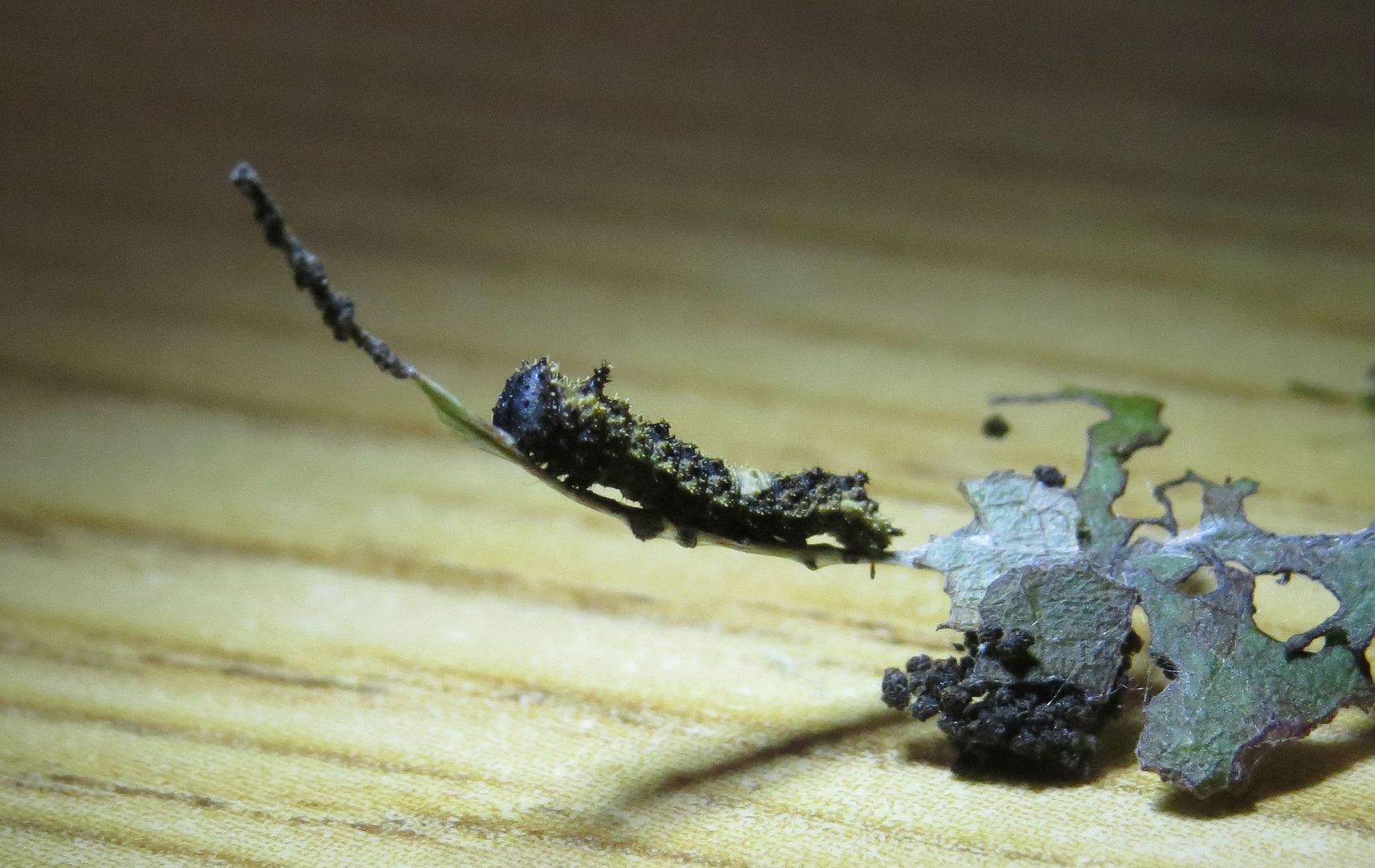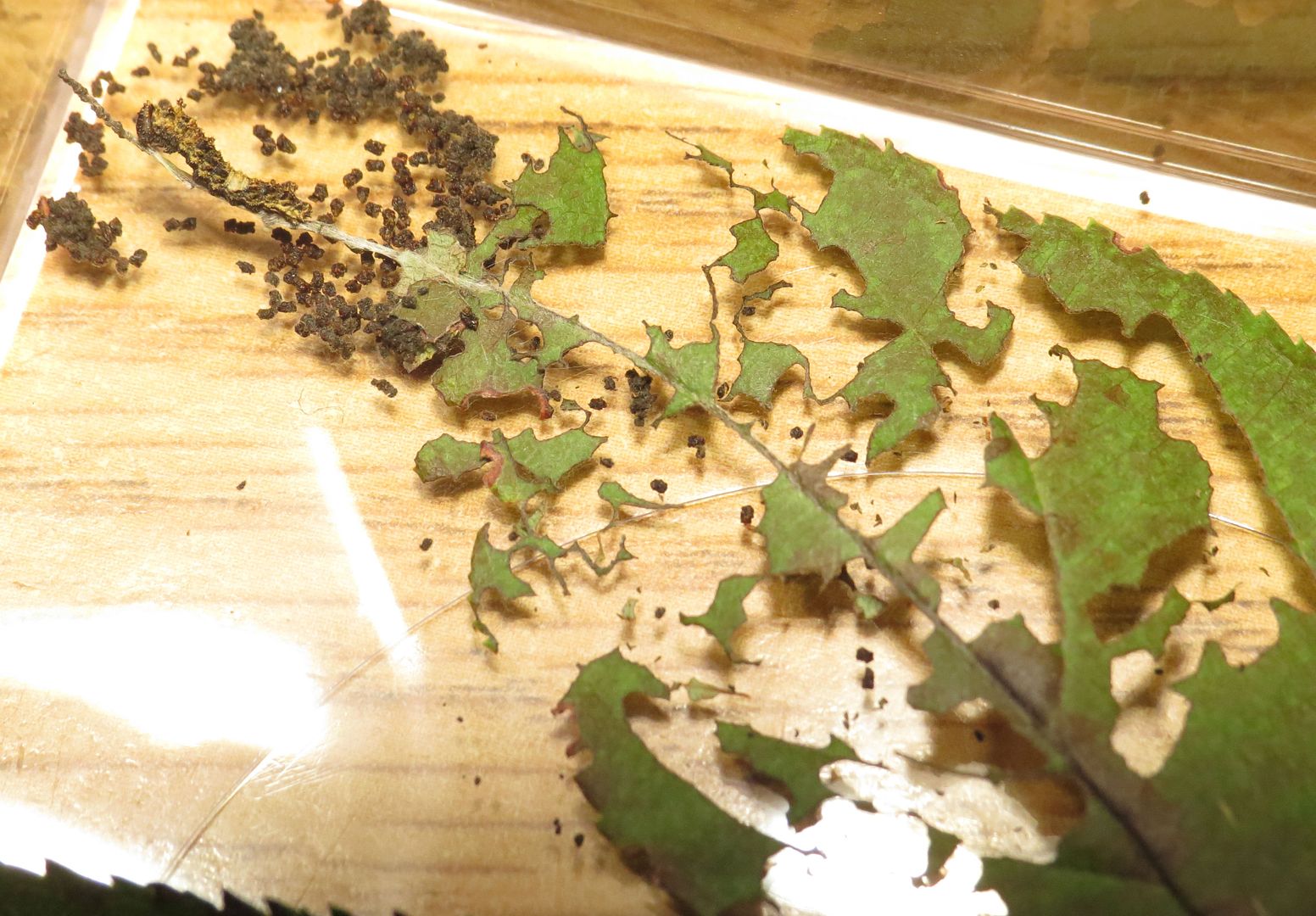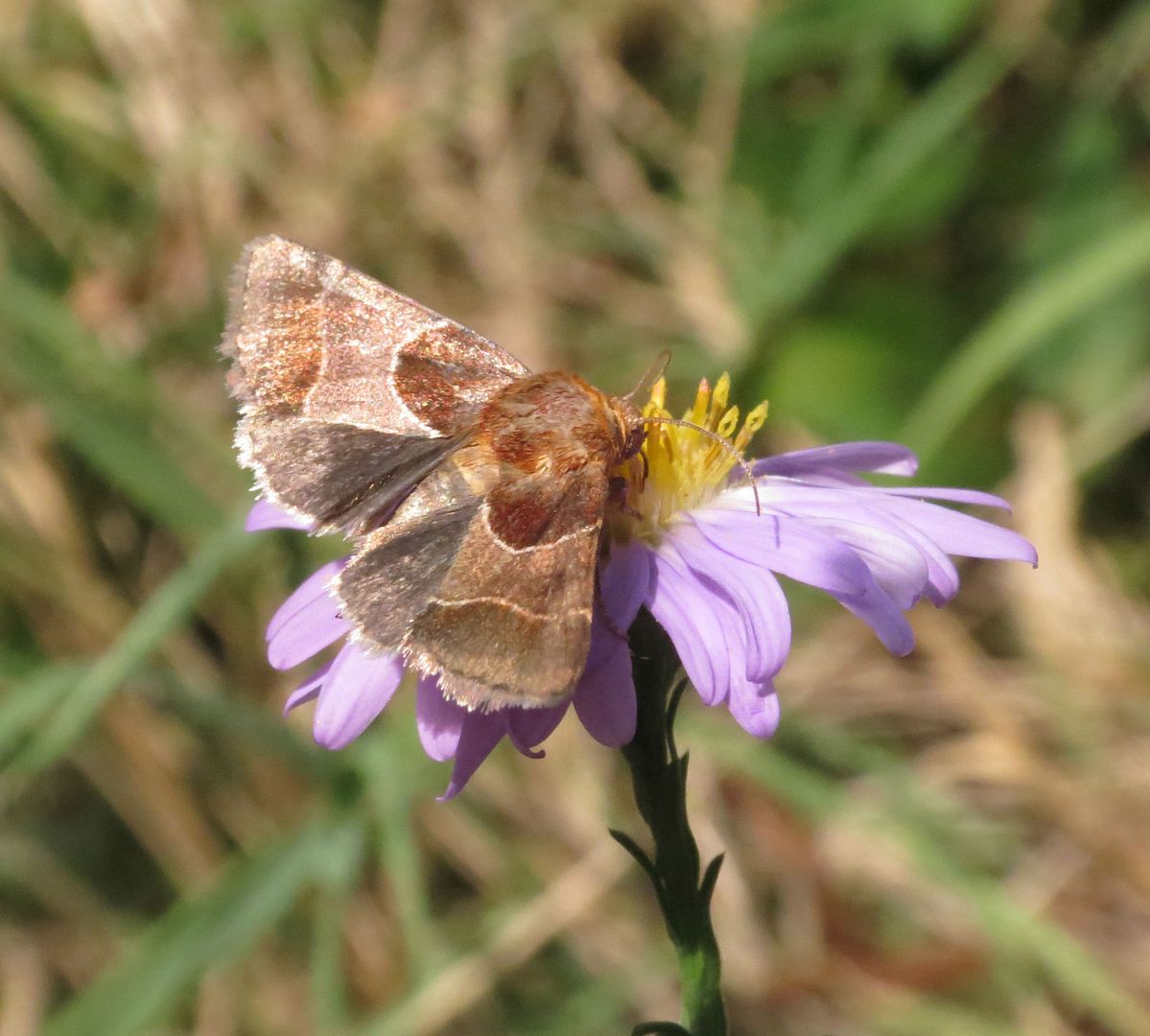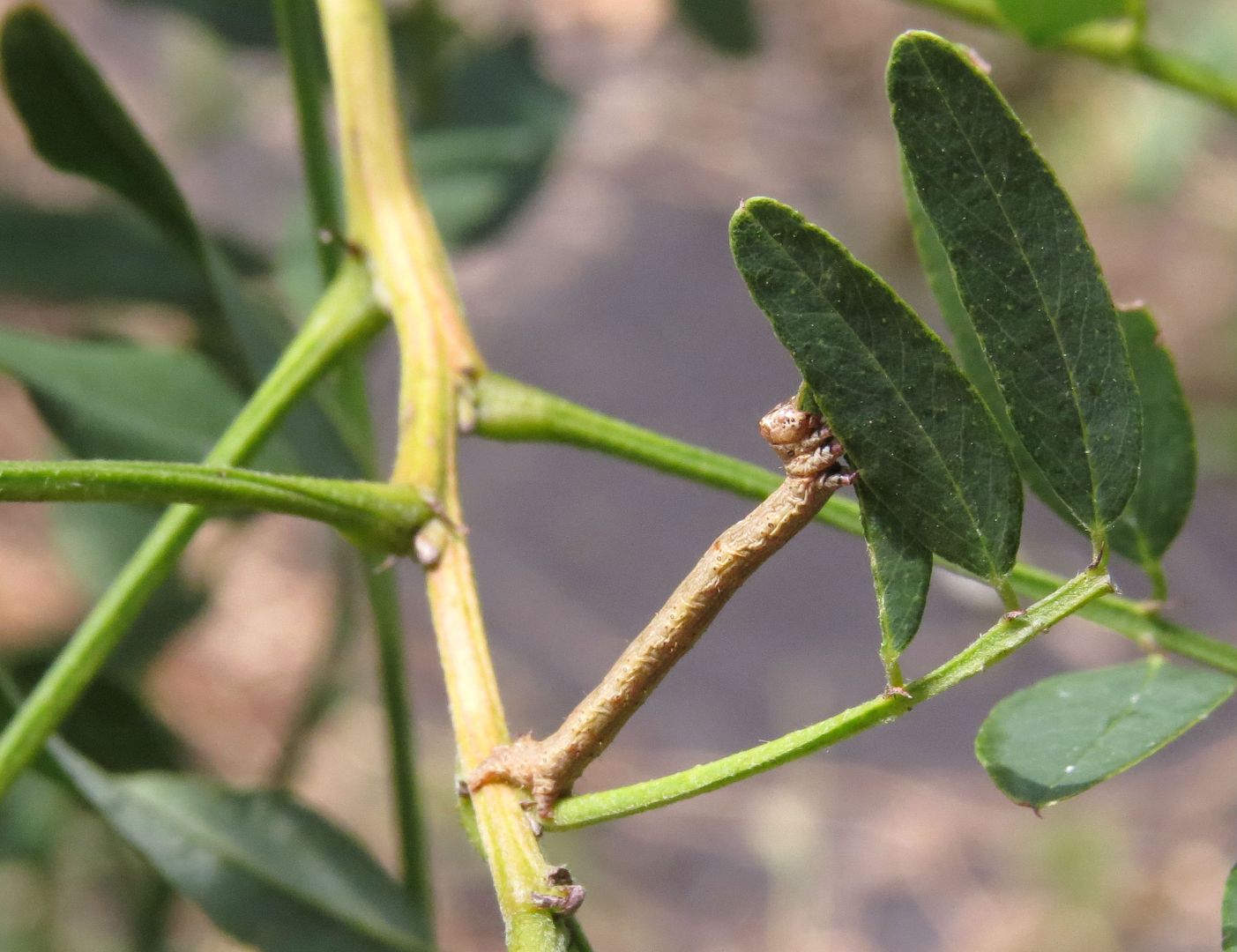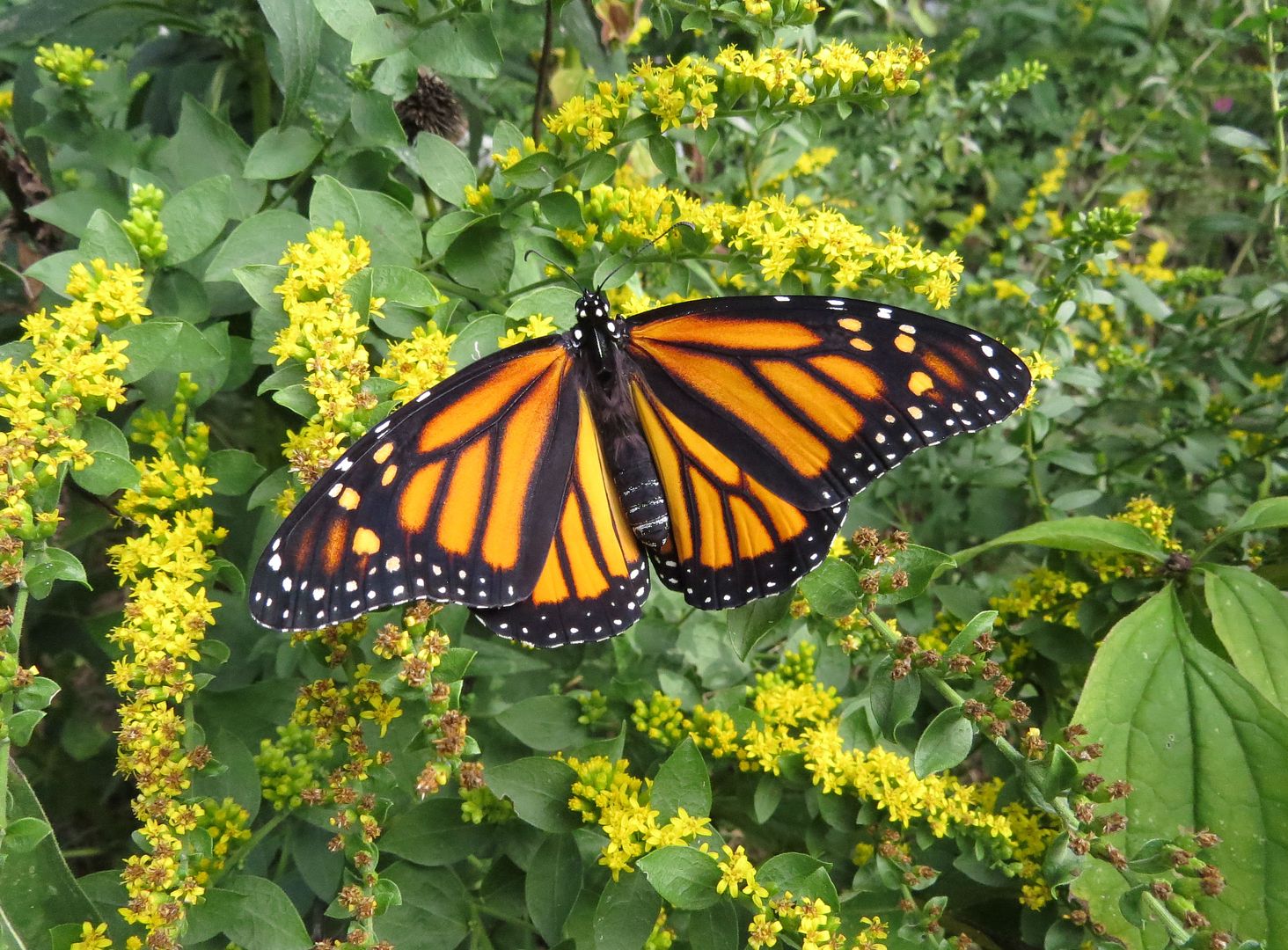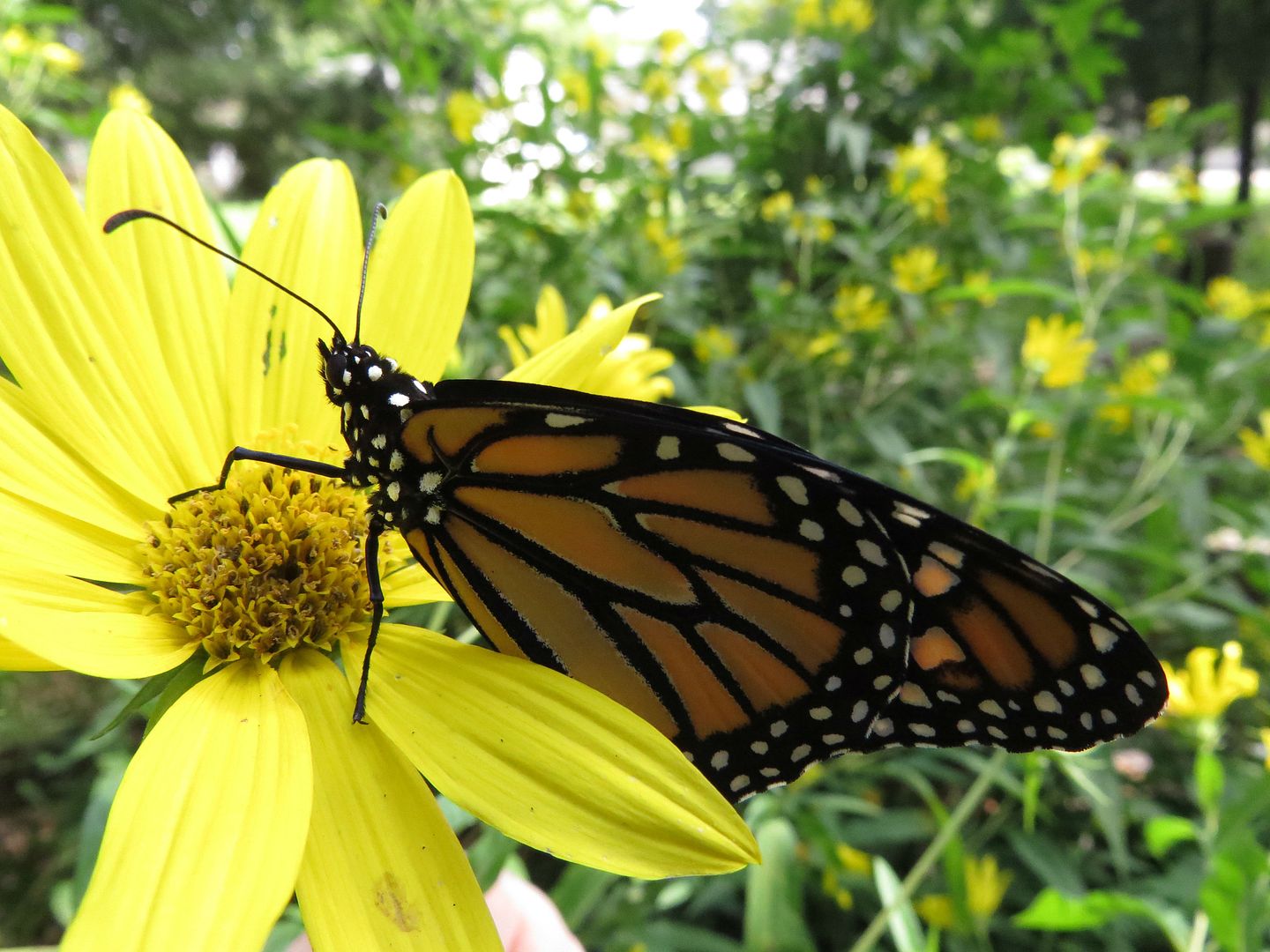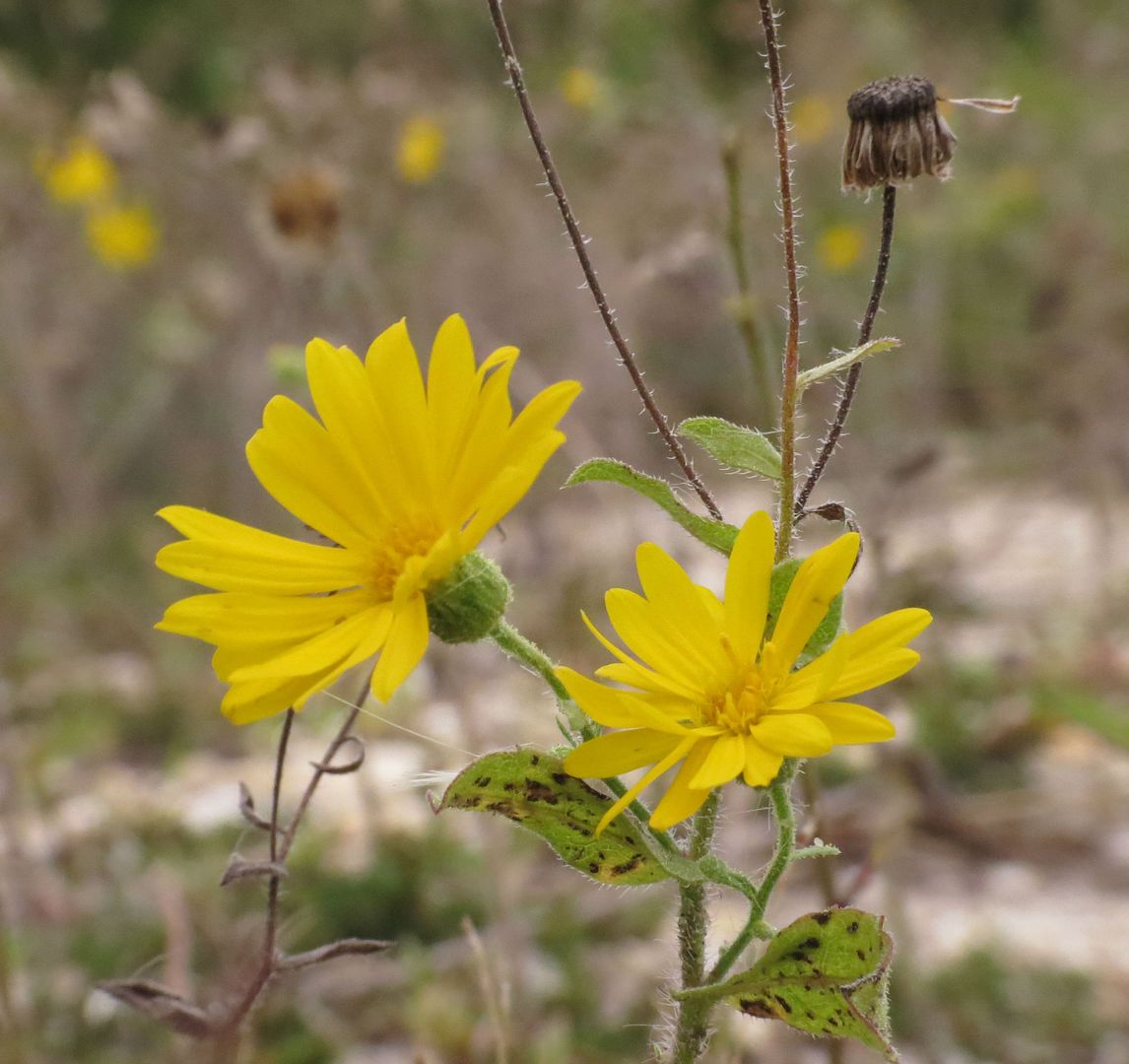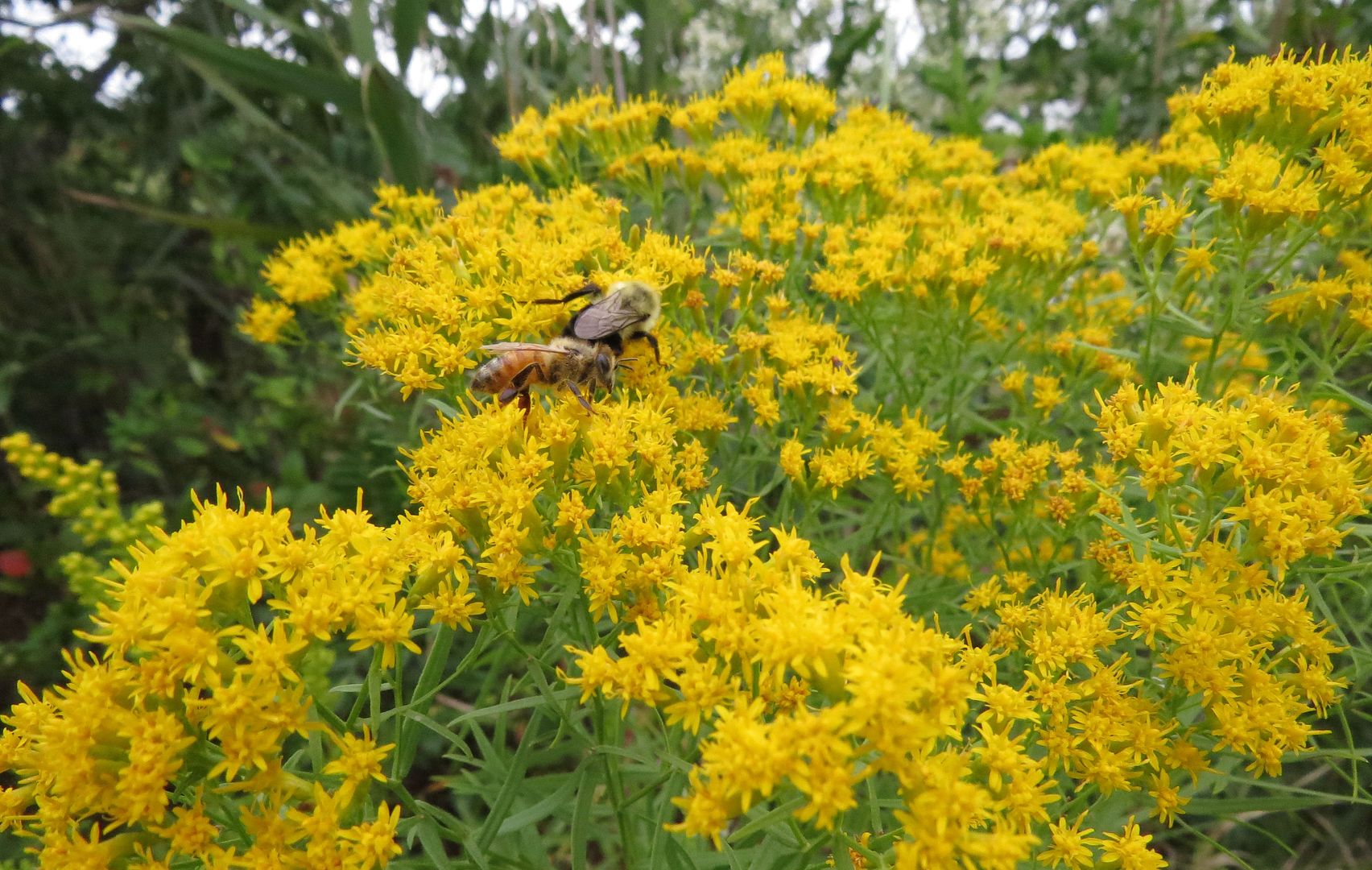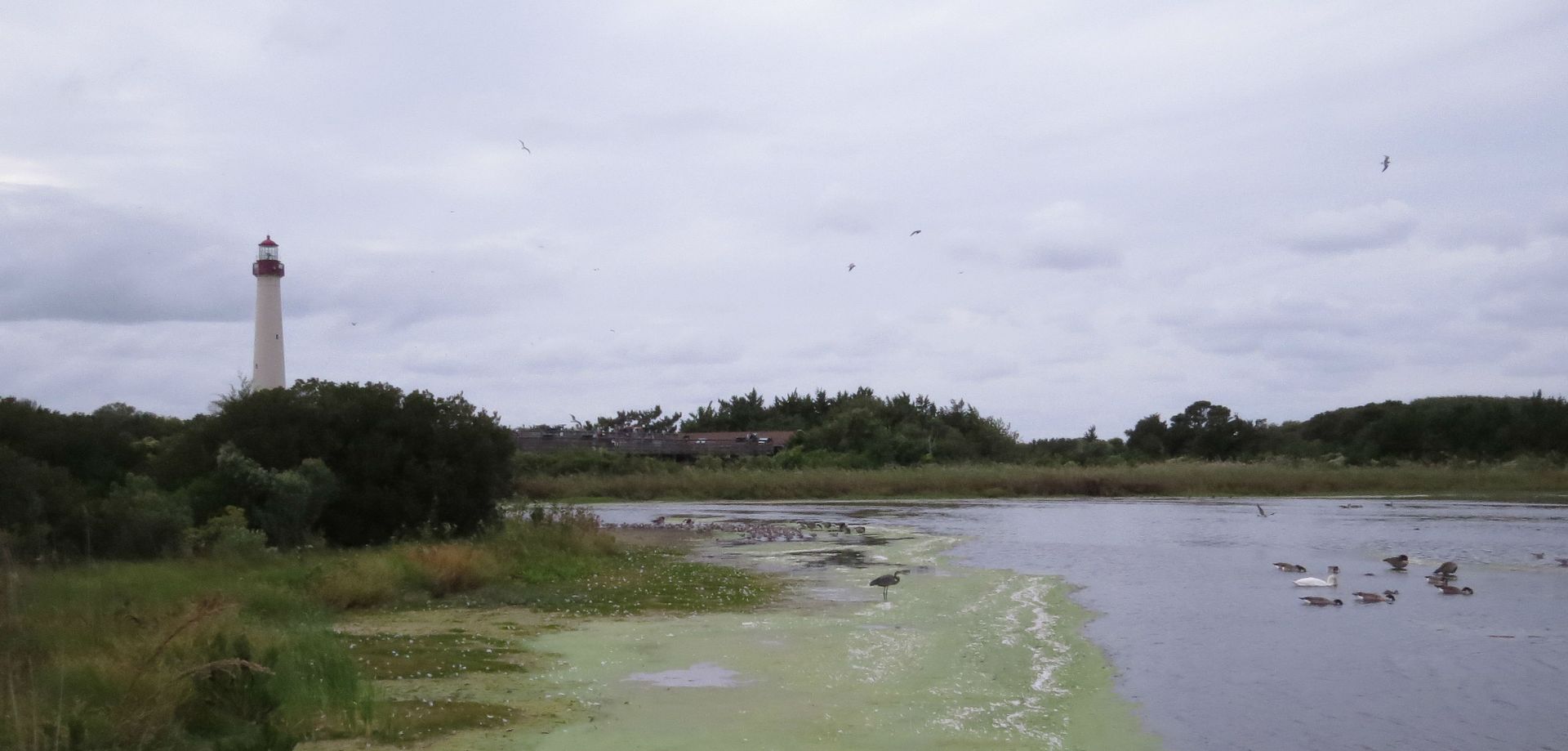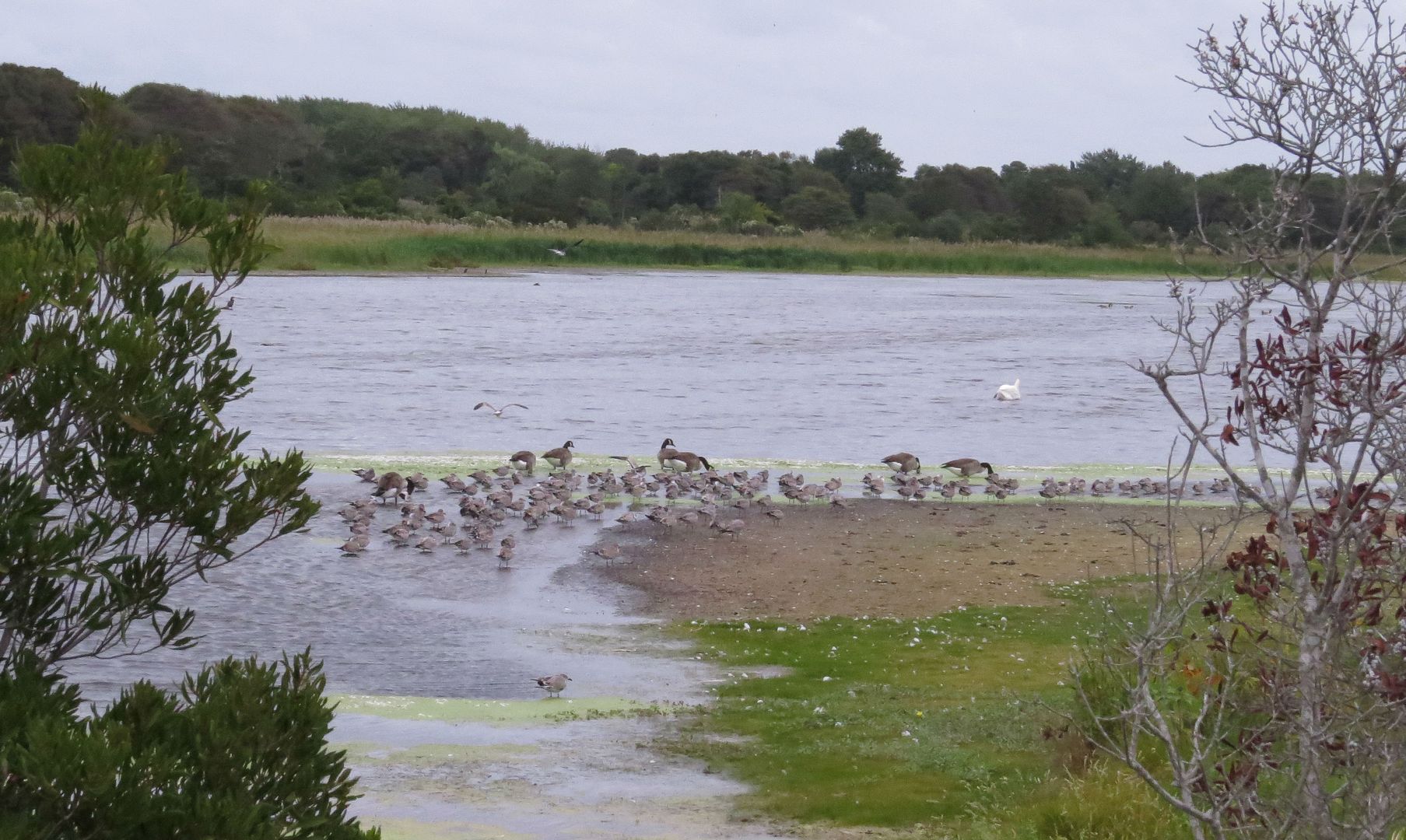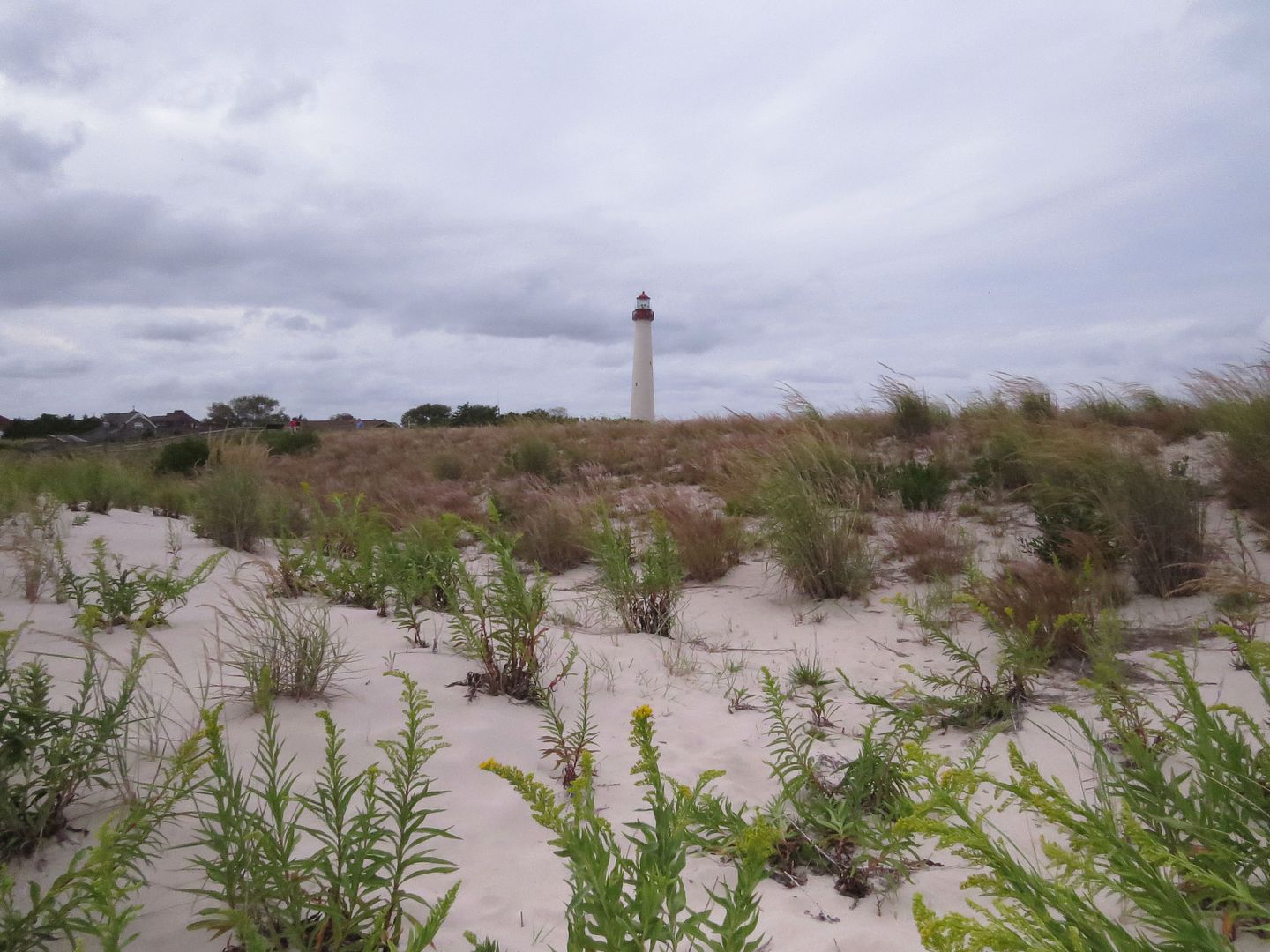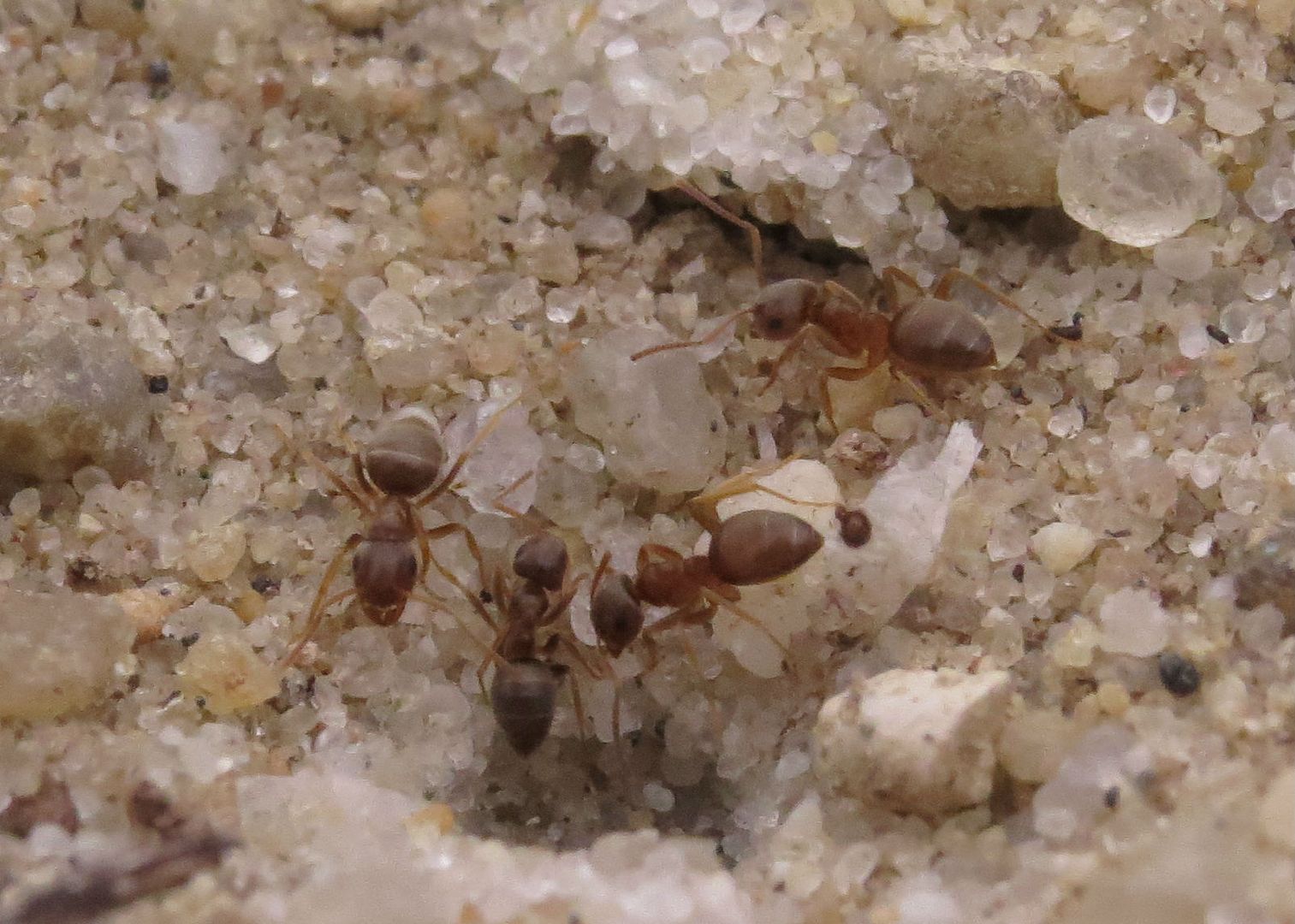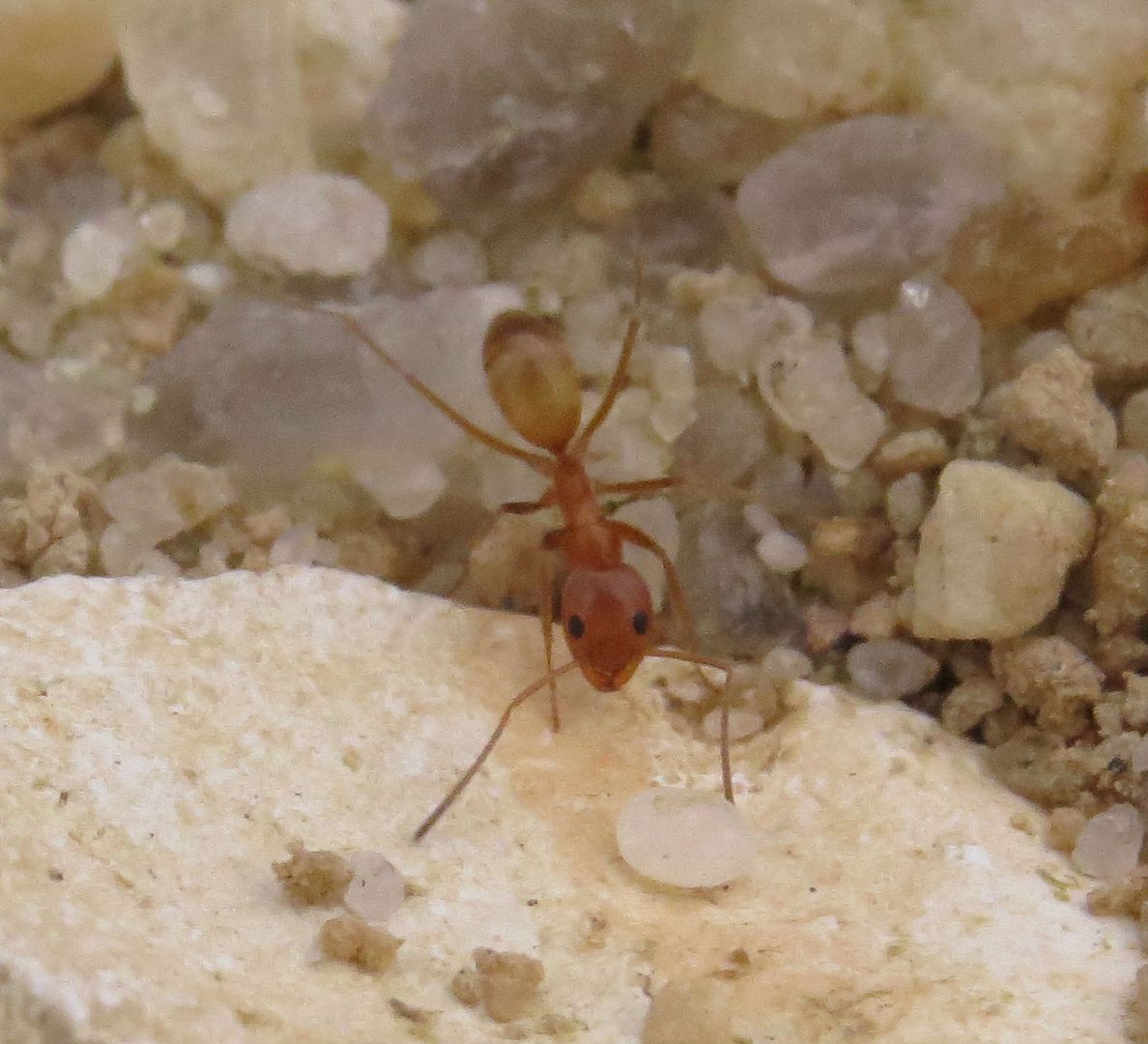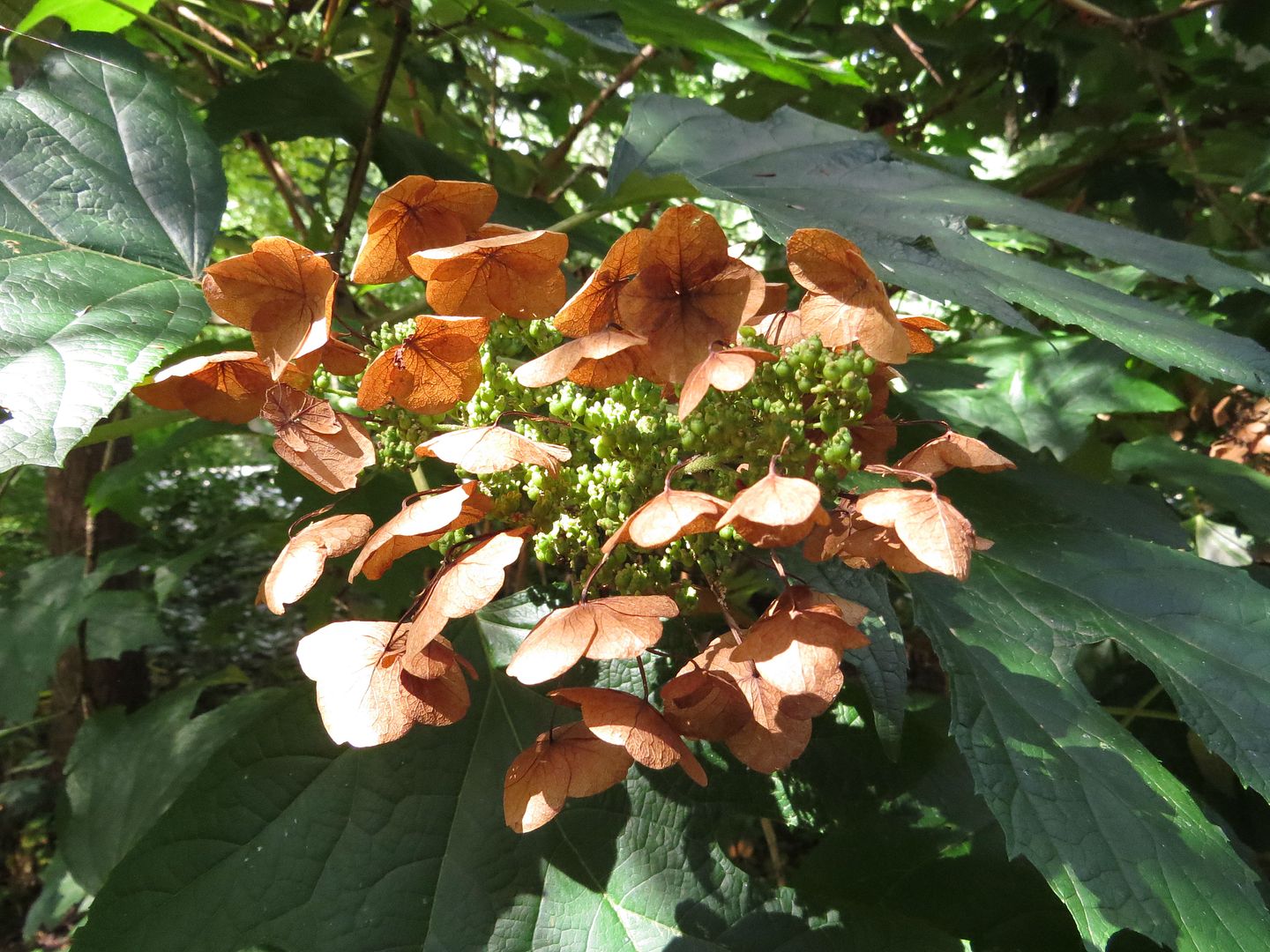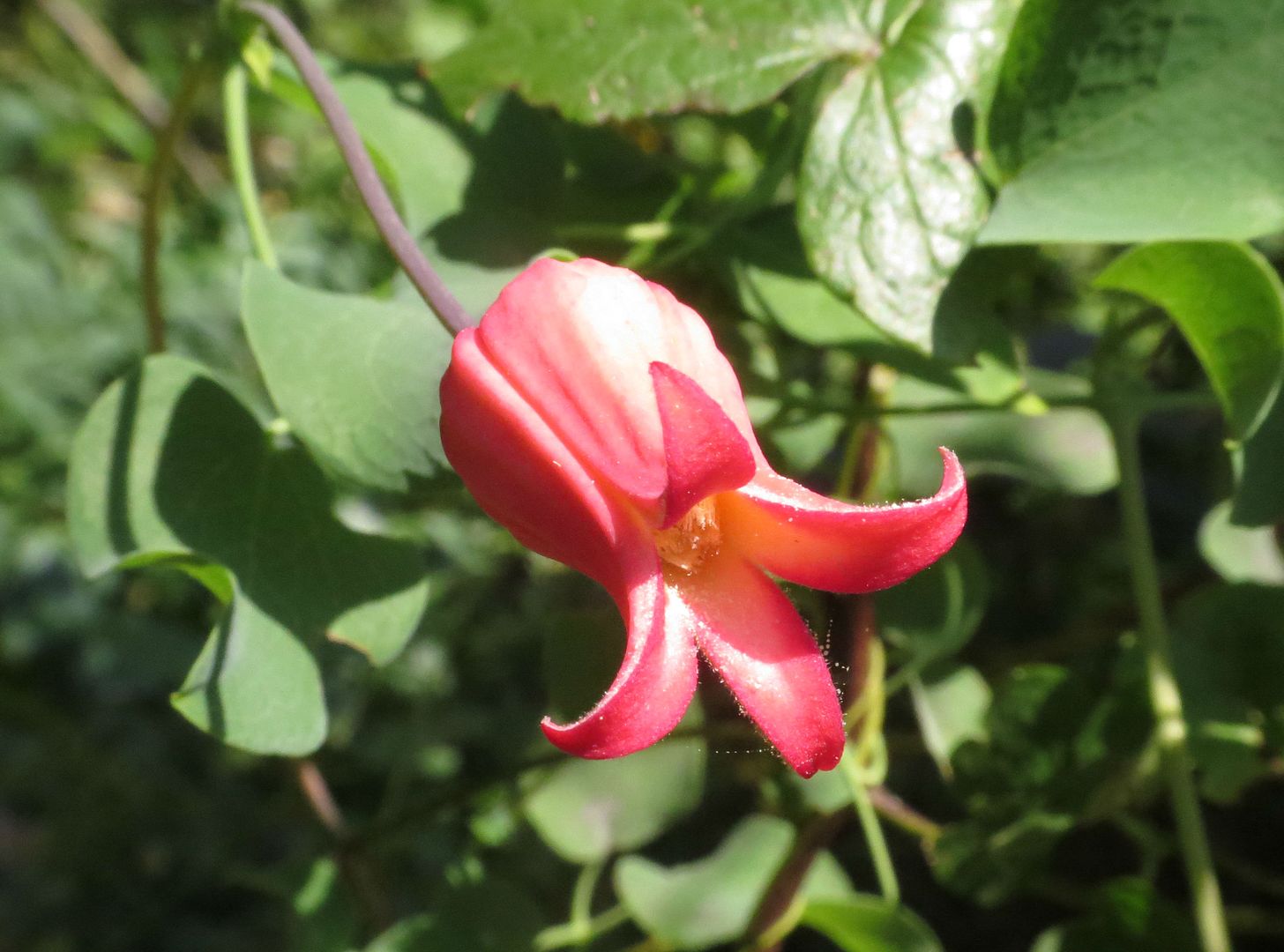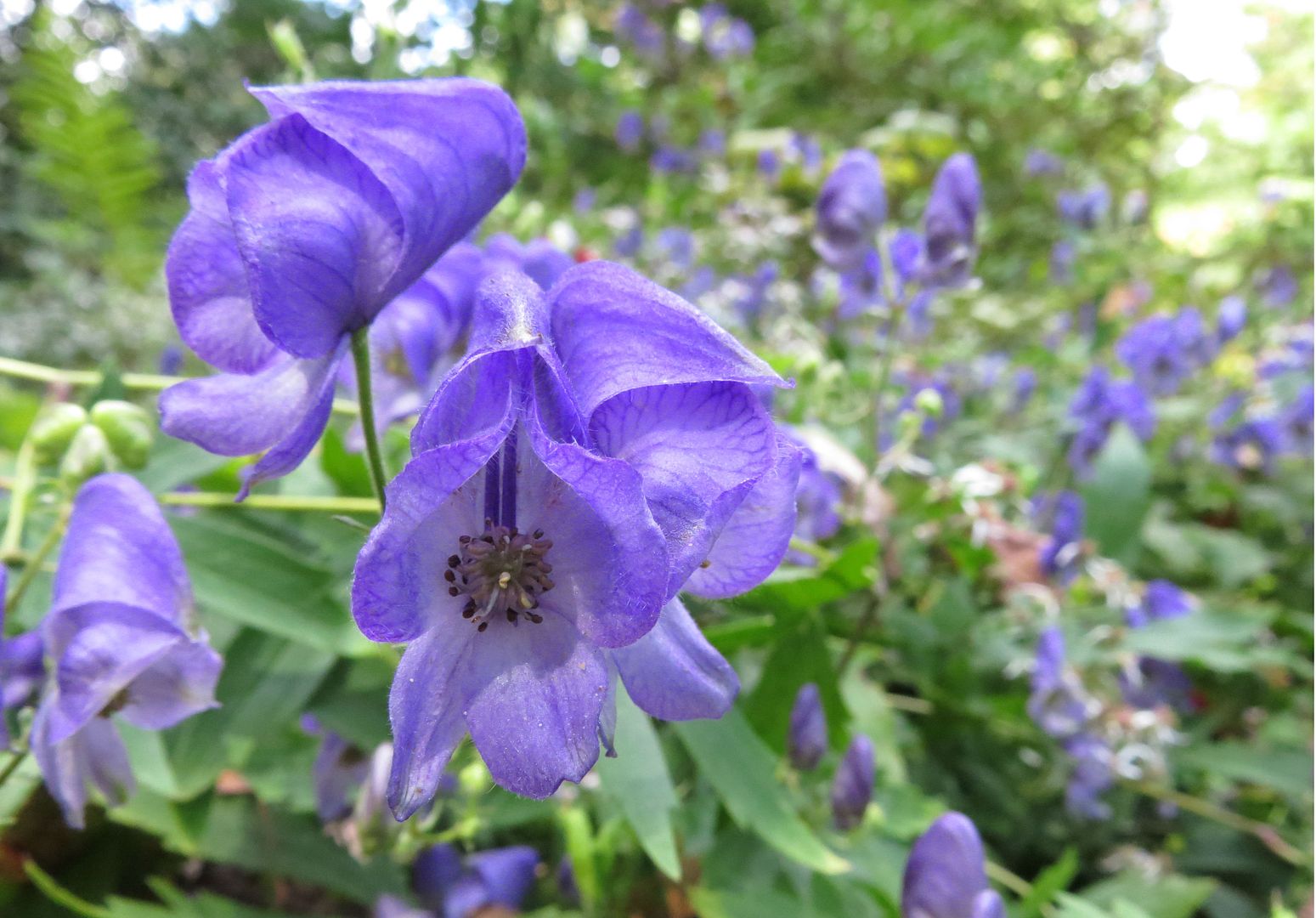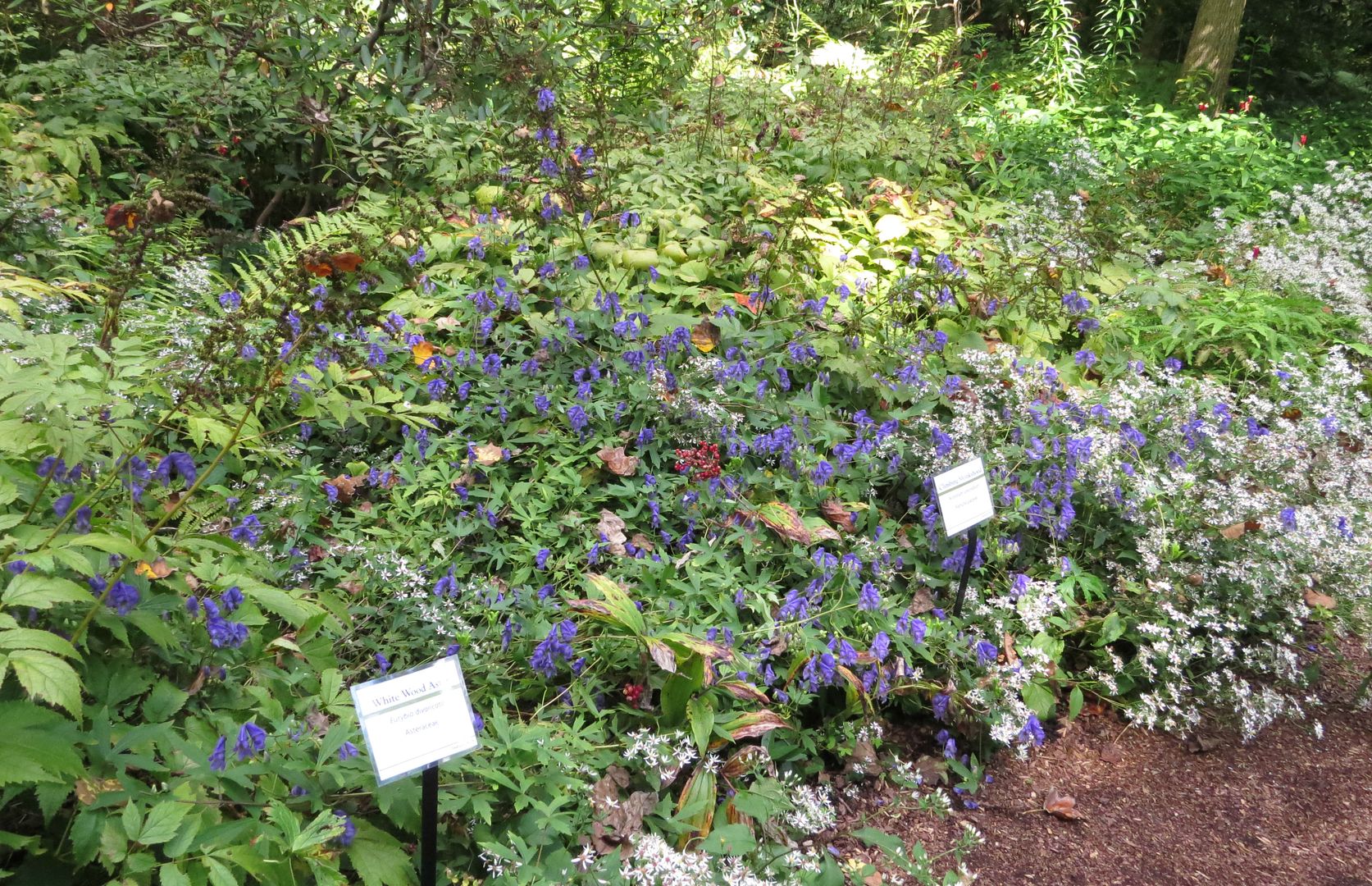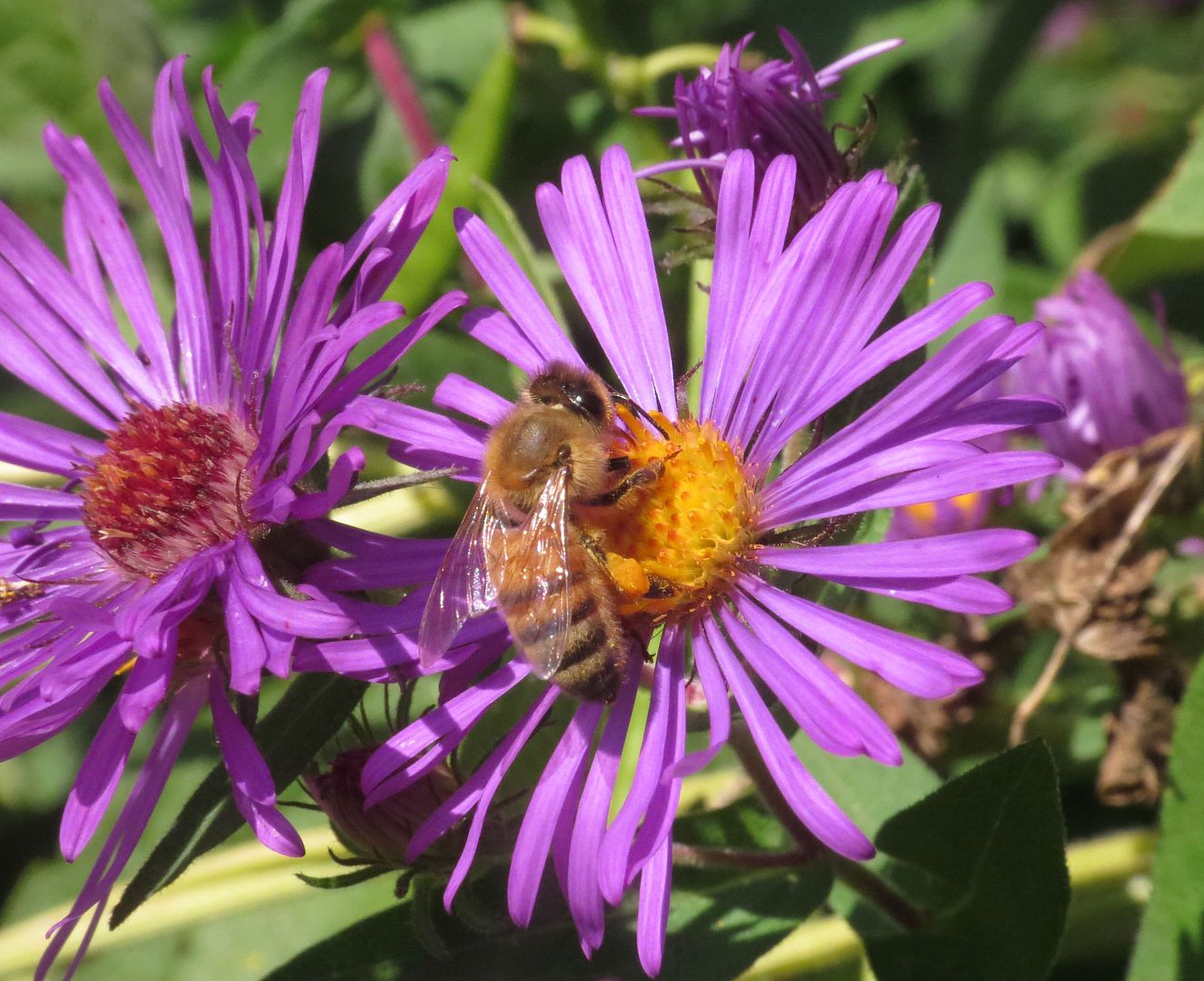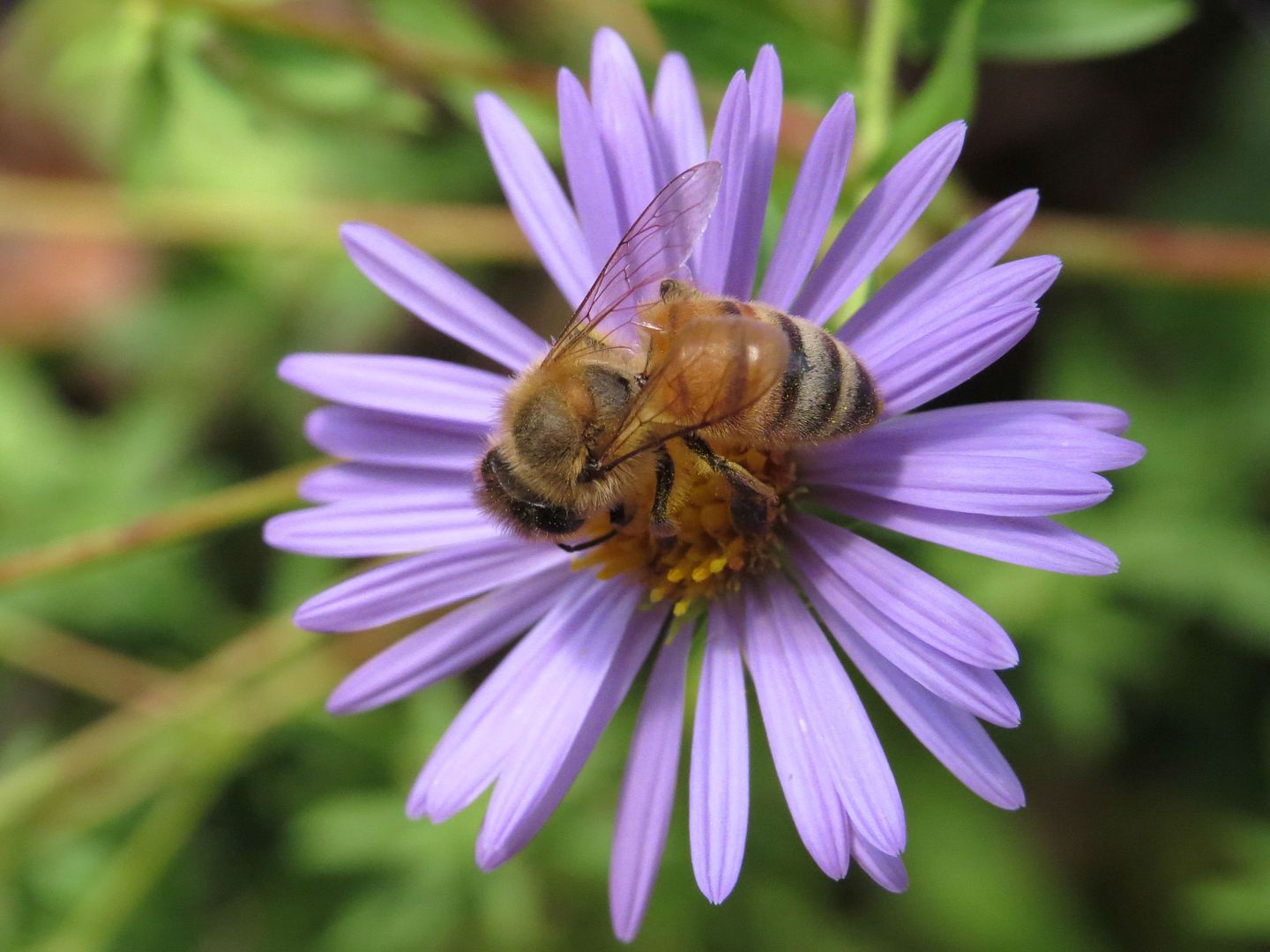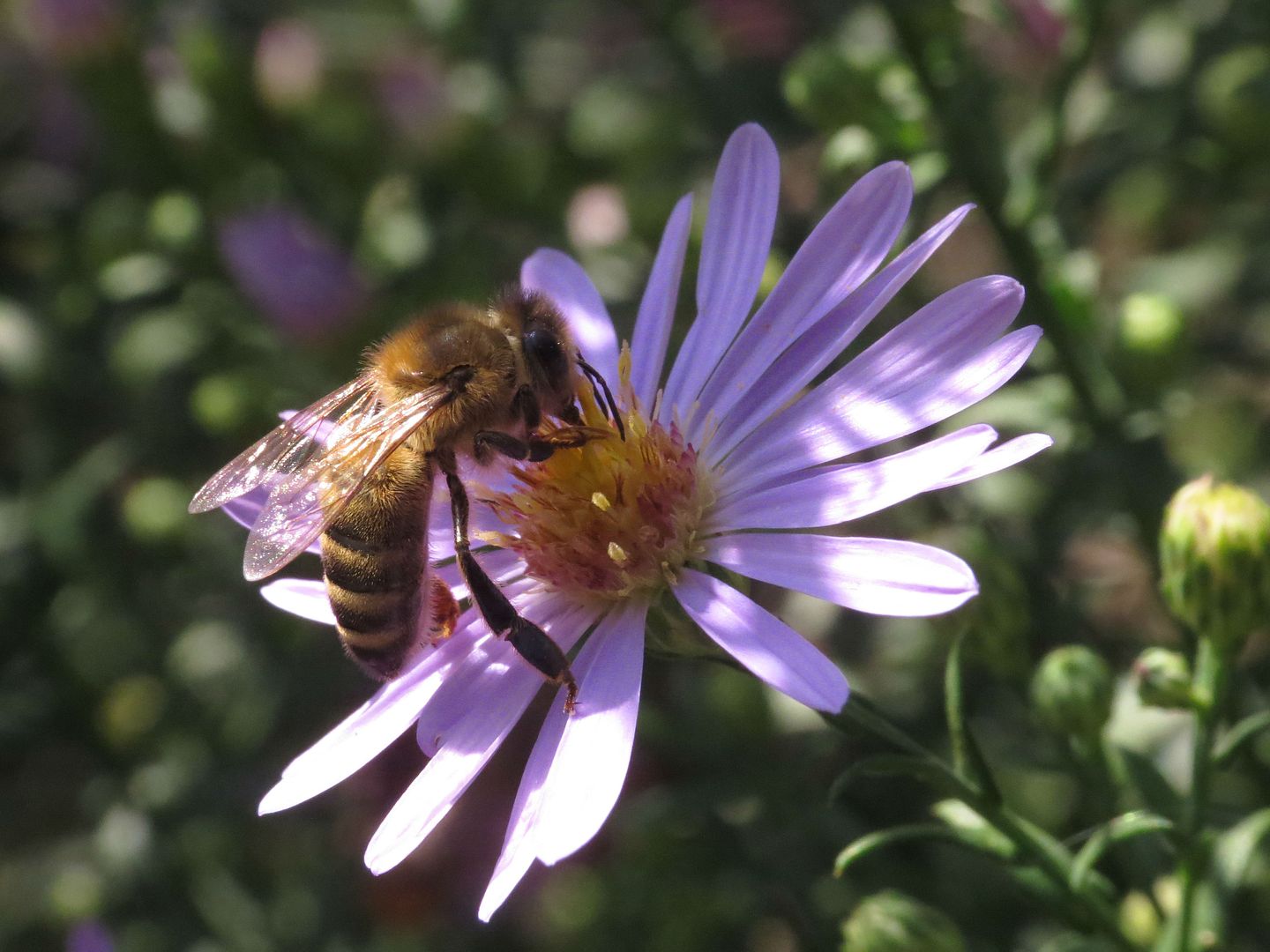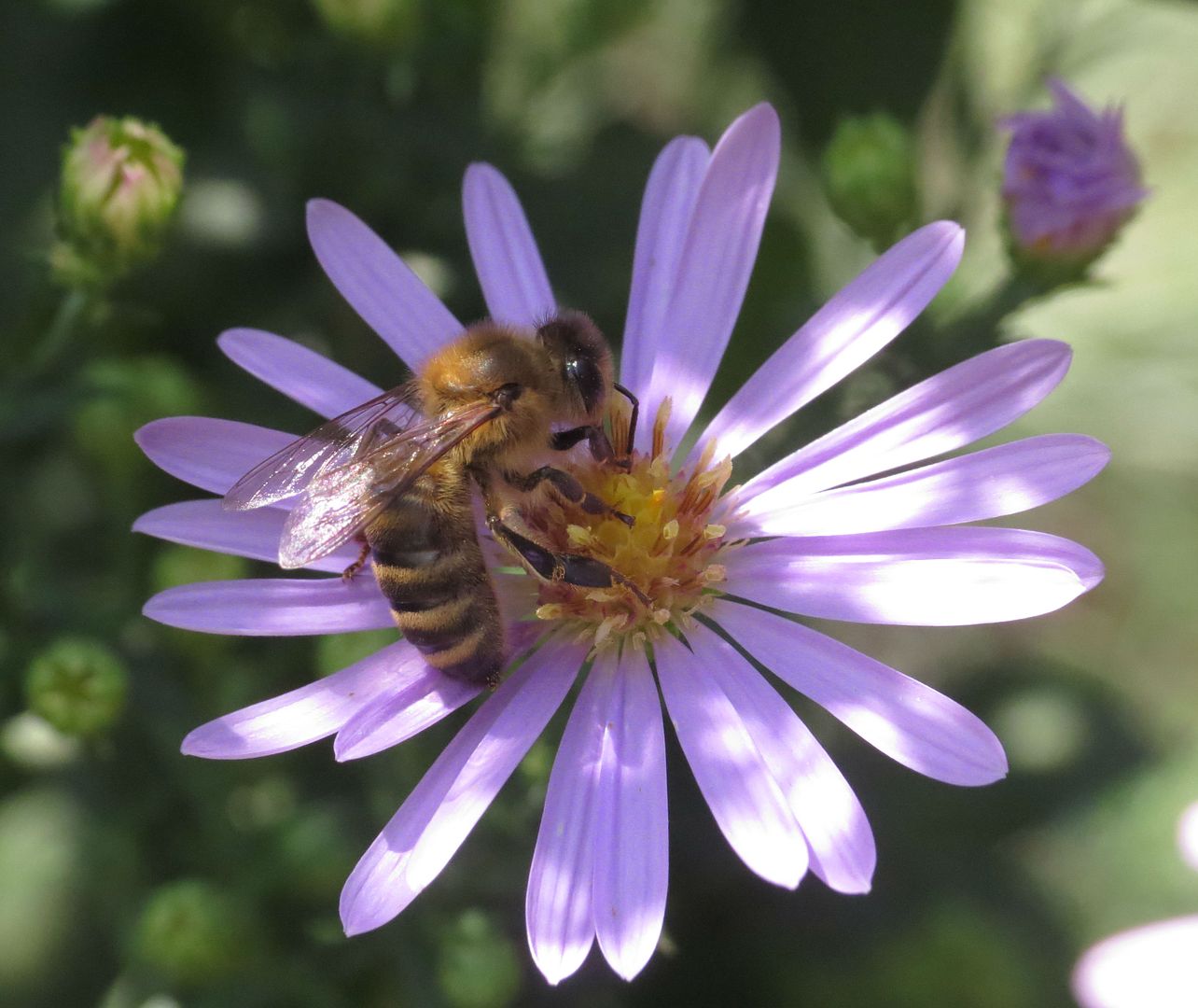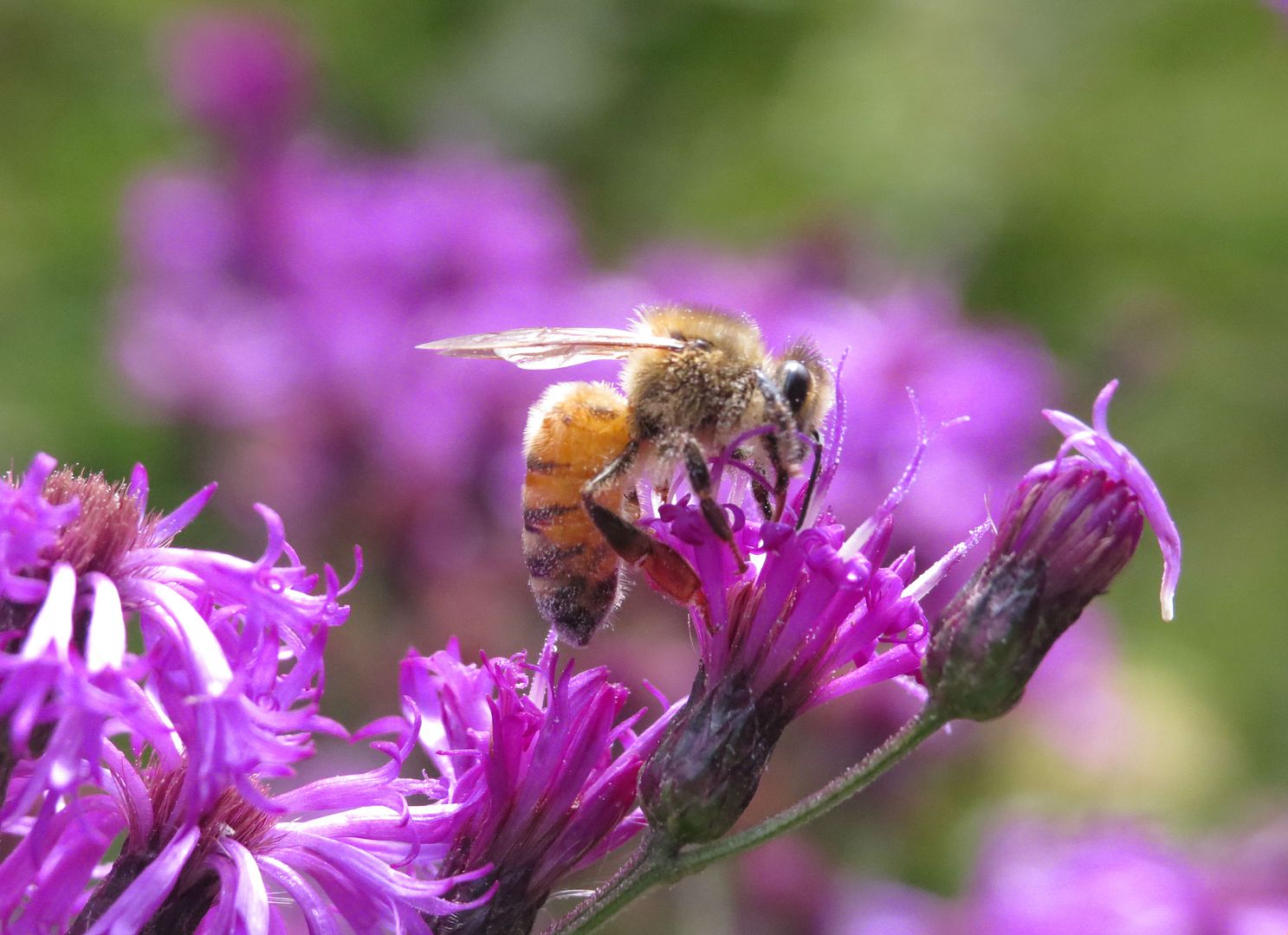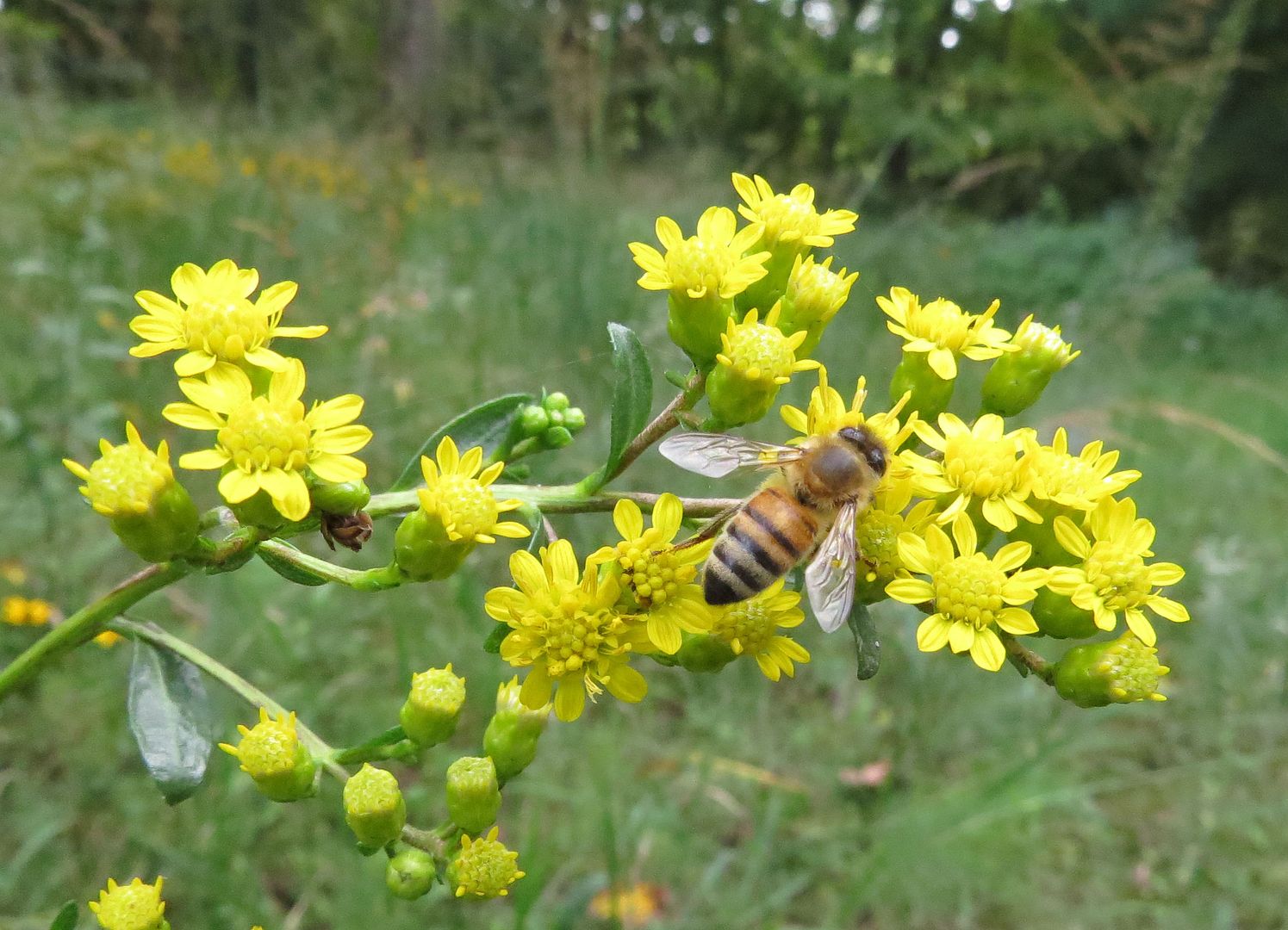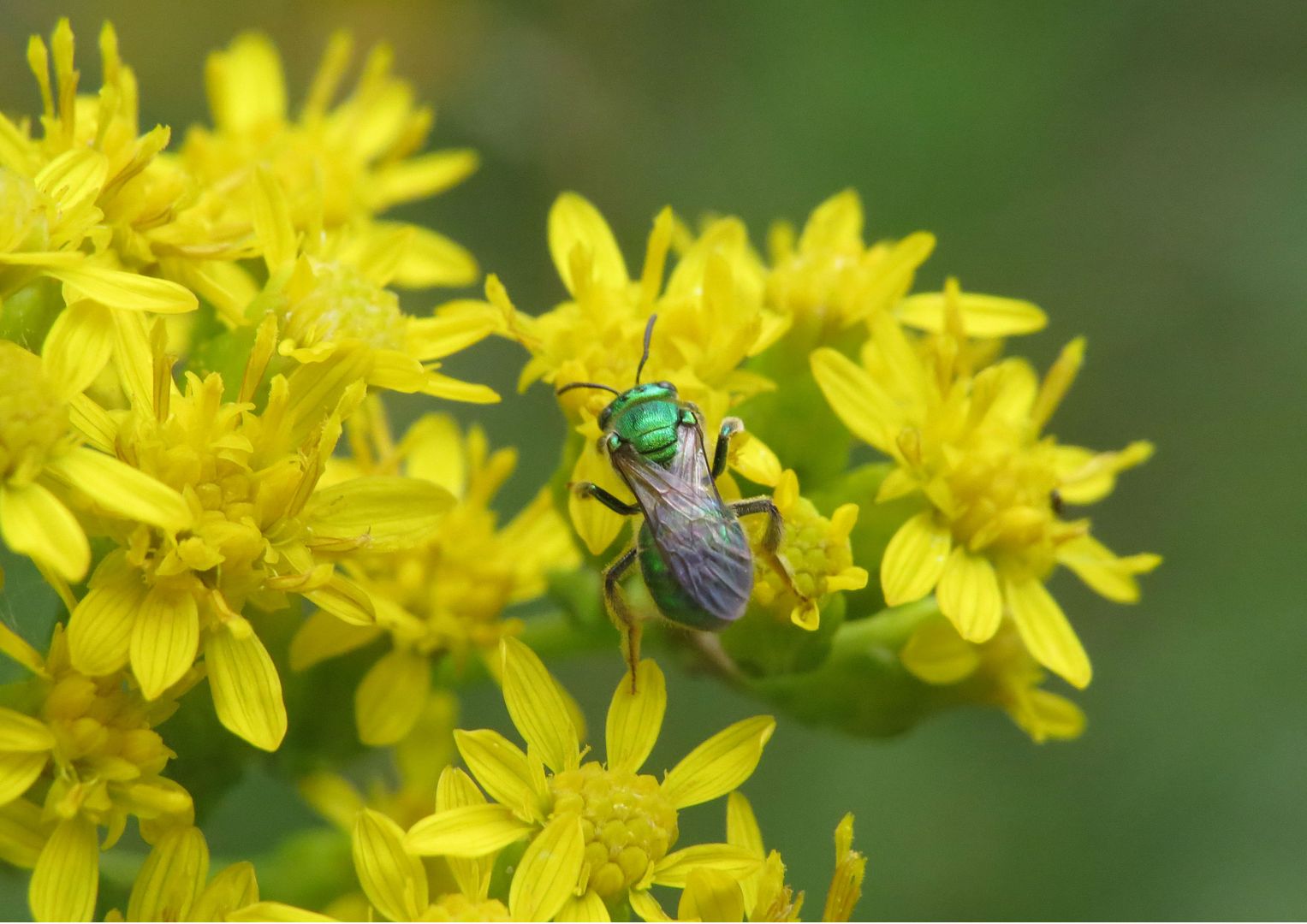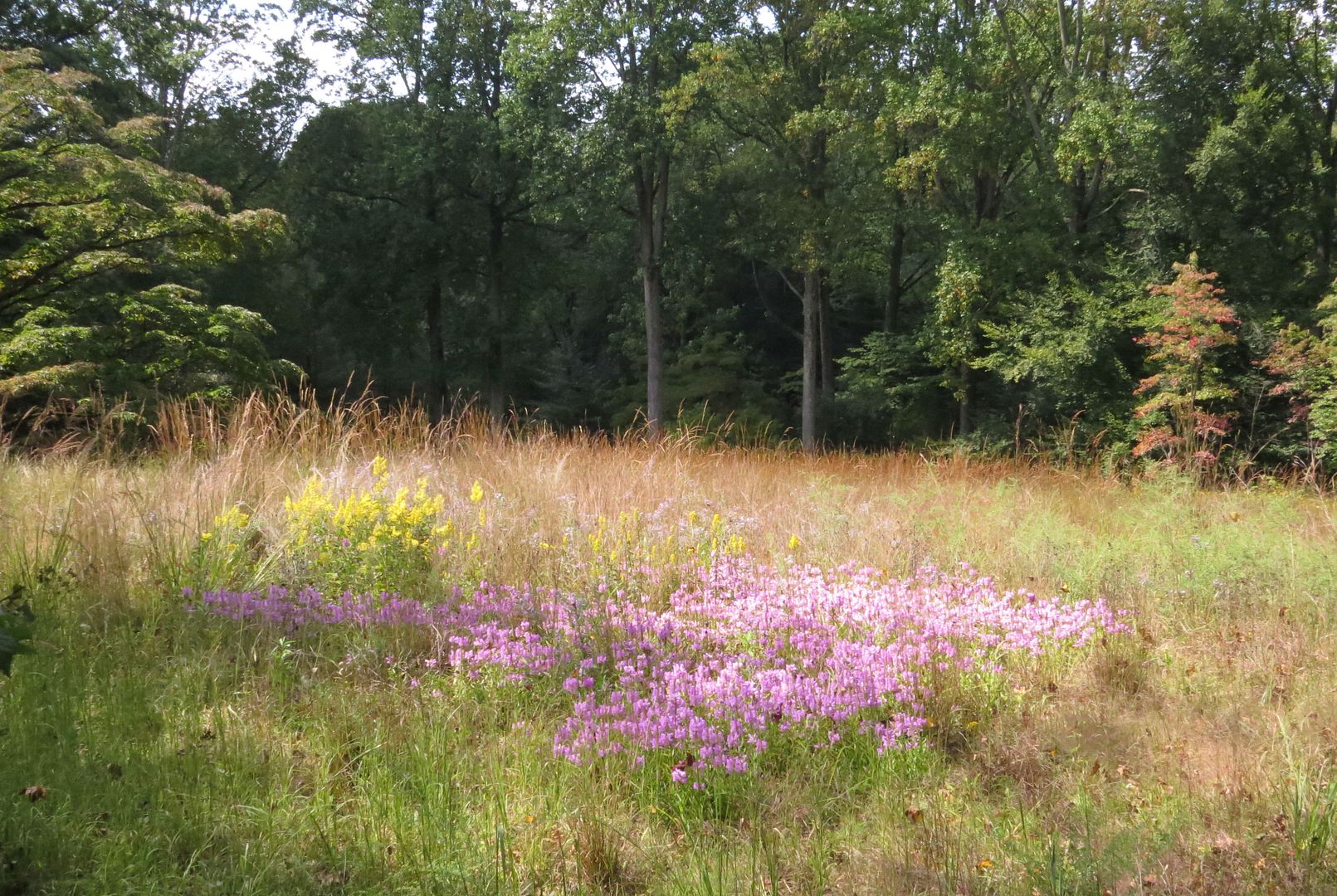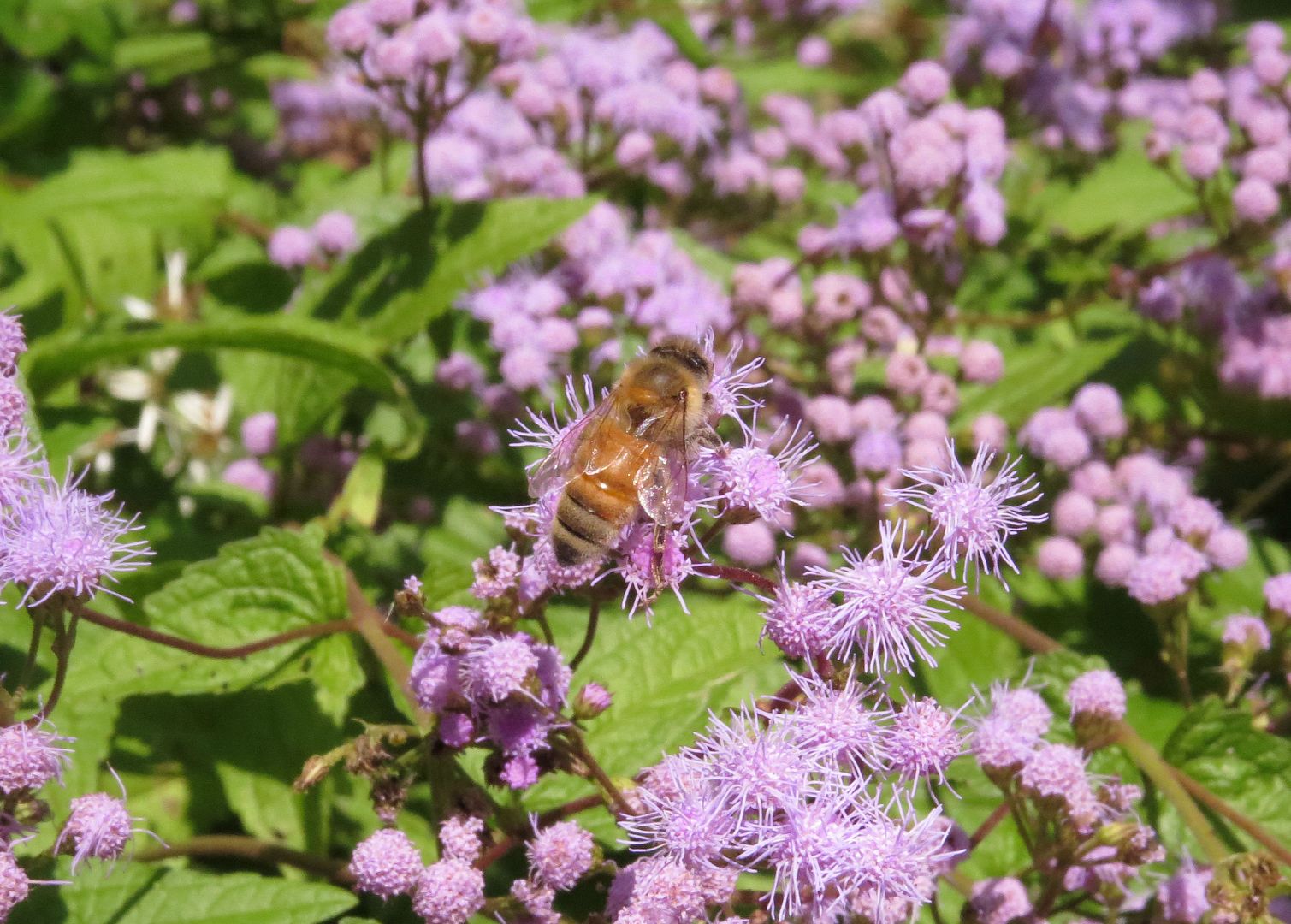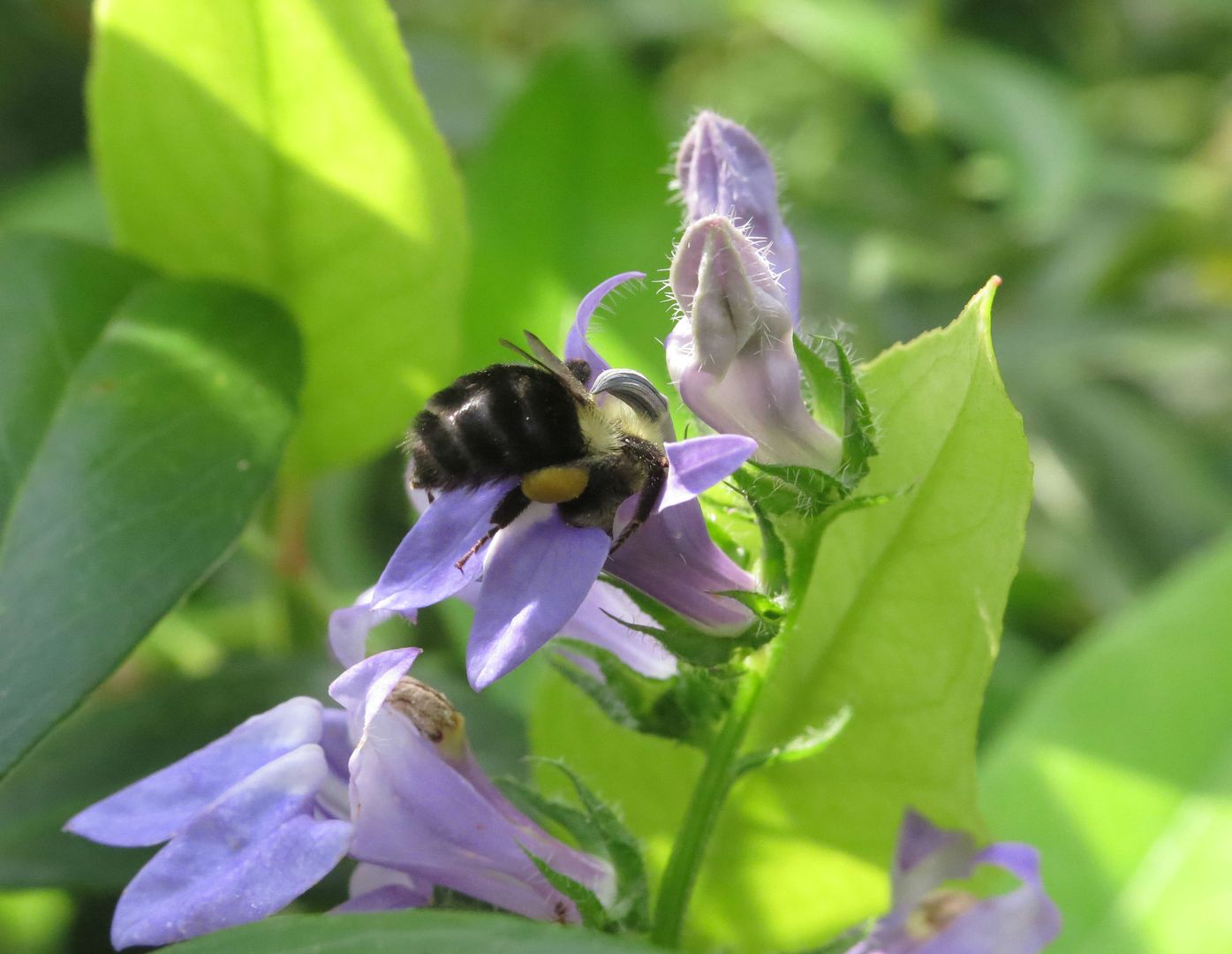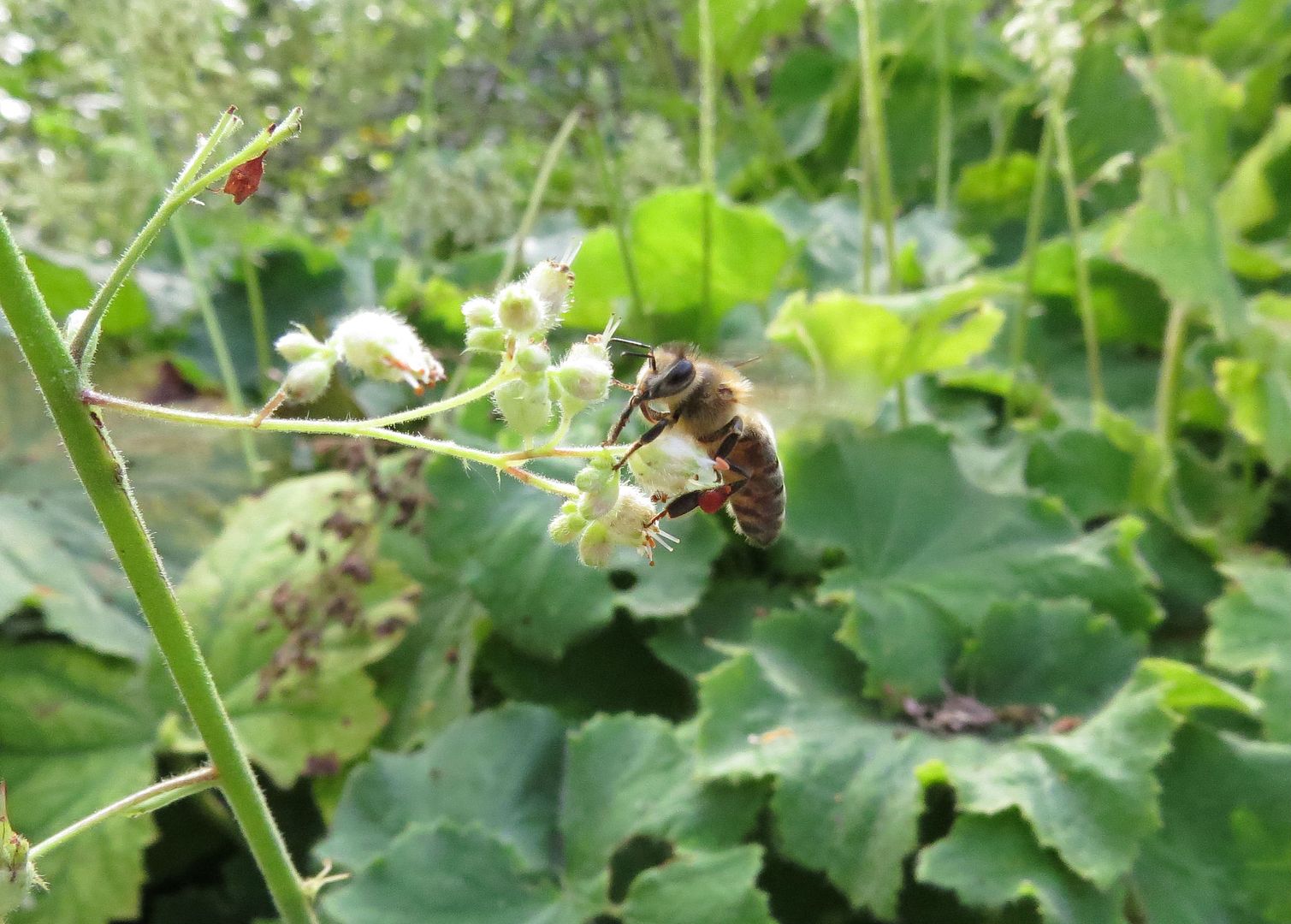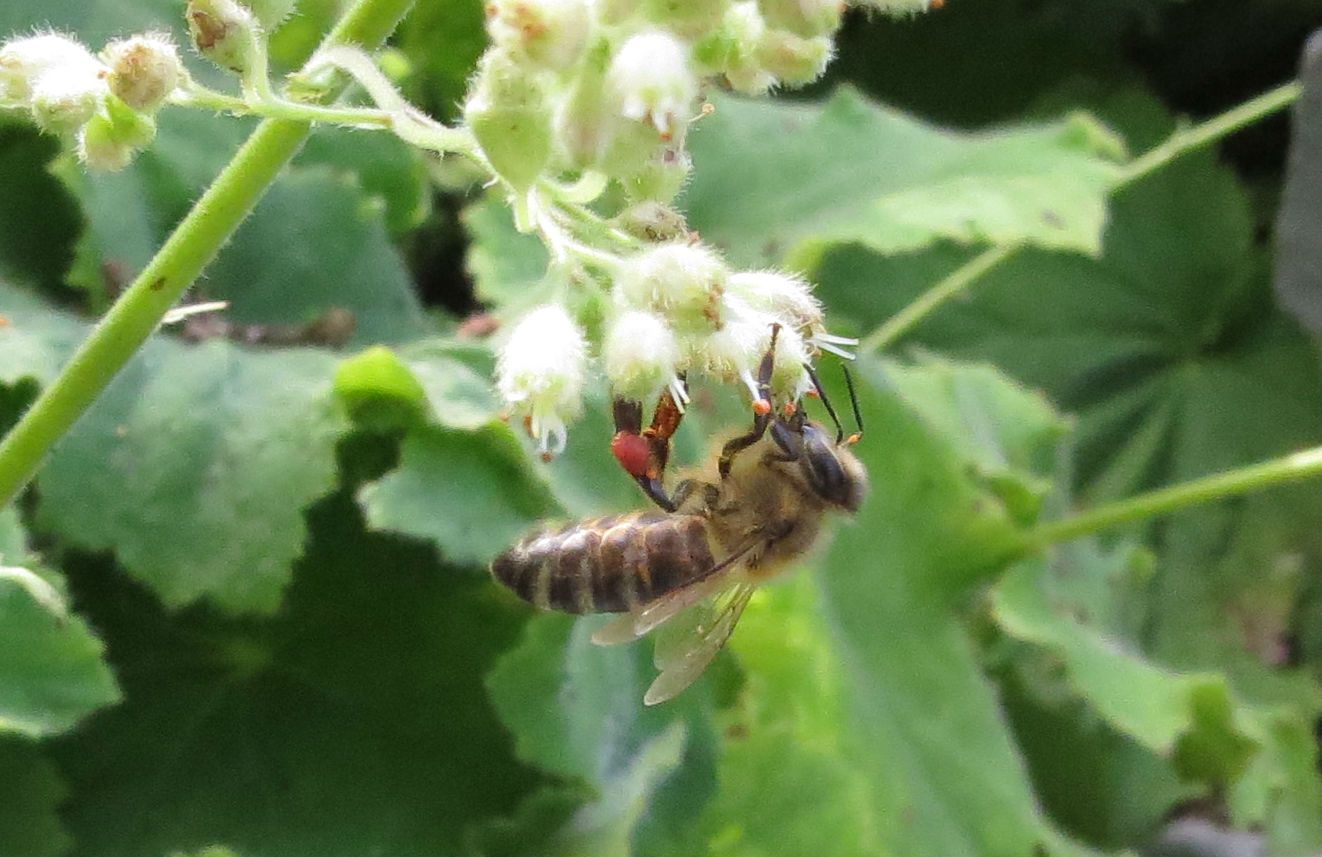Also happening with Caterpillars this autumn, I'm attempting to raise a
Red Spotted Purple or two. I eyed a female out in the yard laying eggs,
curiously on two nonnatives, which the caterpillars seem to be eating. A
Snowdrift Crab Apple but they're in the genus Malus so I'm doubt native
or not really matters in that case. The other was a Japanese Weeping
Cherry, but that's also a Prunus so maybe that doesn't matter as much?
Still though I don't see Tiger Swallowtails or Silk Moths laying on the
tree so I'm sure the native Black Cherry is the superior host plant. In
the short amount of time I've had the sapling Black Cherry I can say
I've already found way more caterpillars on it than the ornamental
Weeping Cherry.
In the wild Red Spotted Purples always lay eggs towards the tip or ends
of leaves. Ideally it's the tip but I've seen some of the more spiky
edged host plants confuse them when laying and eggs are off center to
the side.
Upon hatching, what seems like 7 days later, the caterpillar begins constructing a "stick" or poll out of its own frass and silk which it hangs out on so ants don't eat them.
Funny enough EcoBeneficial interviewed Doug Tallamy about this topic. I have the same Lepidoptera species laying eggs on my Black Cherry sapling, but because I have a happy colony of Camponotus subbarbatus living in a log to that flower bed, my tree still has all its leaves! Every leaf on this plant has a nibble taken out which I would characterize as standard first instar caterpillar bites. But nothing beyond that! No branches stripped, no missing leaves, no half munched bites taken out of the leaves. Because I have this ant colony foraging on the tree, the caterpillars never make it beyond the first or second instar. Even the Red Spotted Purples don't seem to live long enough to make their first poo stick.
After making the poo stick, they're free to feed on the leaf little by little and always have something to run back to.
A complication with keeping this species in captivity is that they over winter in the caterpillar stage. In the wild they spin silk around a leaf or two to build a "shed" that they nestle into until the tree leafs out again next spring. (Perhaps consuming the flowers in the case of apple trees?)
So a friend suggested to me to keep them in the fridge when all the leaves fall of the tree. Hopefully that will be enough get them to survive the winter and I can continue to photograph their life cycle next spring.
Also out in the garden I found an Arcigera Flower Moth, Schinia arcigera, which is a daytime flying moth that lays its eggs in the flowers to members of the Aster family. They nectar on open flowers but lay the eggs into the buds that have not opened.
It was a little hypnotic just watching this one hover about the asters. She took a liking to the Aster 'October Sky' which has become my favorite cultivar I think. I should really find another Aster cultivar that has a slightly different color to it so I can mix and match.
Also saw this one on the False Indigo Bush. I had to prune off the bulk of the foliage to this plant because it was top heavy and going to tip over. It's already sent up a new stem that's just as tall as the old growth was. A friend who operates the Shaw Nature Preserve in Missouri says he cuts them to the ground each year after flowering. In nature he tells me it's common for them to become top heavy and fall over, often snapping the stem/trunk completely. It seems evolutionary this species is stuck between being a soft wooded tree and a herbaceous perennial.
Monday, September 28, 2015
Some Monarchs
Despite the lack of Monarchs visiting my yard this year I did manage to raise one. Actually it was two but more on that later.
Where I am in New Jersey, we typically don't see Monarchs until August when they're already on their way south. I find them in meadows and natural lands but rarely see them in May or June when Monarch Watch lists sightings of them here. Really the Milkweed here doesn't even emerge from the soil until early May anyhow, but even then August is a more standard time to see them in the yard. I believe this is because they either follow the Delaware river up, or cross it and hug the coast of NJ. Then as they populate over the summer they move more inland finding different fields and gardens with milkweed to lay eggs and start up populations.
Milkweed this year seemed to be sold out from all the local nurseries until mid July. I finally got my hands on a few plants around that time and sure enough the nursery was having issues with Monarchs laying eggs on their supply. They kept having to relocate the caterpillars onto a patch of common milkweed around the back. Naturally I was willing to help by buying the plants that had caterpillars on them already. I moved the cats to the more established plants I already had growing in my garden and one of them became large enough to house in a cage.
I usually let them feed outside until they're in their last instar. Then I move them into closed containers with milkweed leaves inside. I would have raised more but wildlife got the three or four others over night.
The first emerged earlier last week. They're easy to pose at that stage. They don't seem to feed at all until several hours have passed, usually after their first flight. To fly after emerging they require about an hour of sun bathing. I took the opportunity to place her on a few different plants for pictures.
These are all plants I know they enjoy nectarine on such as Goldenrod, Asters and Sunflowers. She didn't bother feeding from any of them.
There is a preference for Mexican Sunflowers but the Maximilian would have to do.
I would added to this a few pictures of the second Monarch I raised, but I ended up giving it to my sister-in-law. Her father is terminally ill and I remembered the time I first saw a Monarch emerge from its chrysalis, how it brought me to tears watching something so beautiful come to life and fly away. I wanted her to experience that kind of joy because I felt she needed it.
The chrysalis came from an Aster 'October Sky' I bought from a nursery in Delaware. I was at the register buying the plant when I said "Holy crap, this one comes with a Monarch!" eyeing the chrysalis hanging off a plant stem. The nursery grows milkweed but I didn't notice any Monarchs on them and the plants were well away from the milkweed table, so this was a welcome surprise.
A few days ago this was the picture she sent me. It took off just moments later I'm told and she was grateful that she got to see it.
Where I am in New Jersey, we typically don't see Monarchs until August when they're already on their way south. I find them in meadows and natural lands but rarely see them in May or June when Monarch Watch lists sightings of them here. Really the Milkweed here doesn't even emerge from the soil until early May anyhow, but even then August is a more standard time to see them in the yard. I believe this is because they either follow the Delaware river up, or cross it and hug the coast of NJ. Then as they populate over the summer they move more inland finding different fields and gardens with milkweed to lay eggs and start up populations.
Milkweed this year seemed to be sold out from all the local nurseries until mid July. I finally got my hands on a few plants around that time and sure enough the nursery was having issues with Monarchs laying eggs on their supply. They kept having to relocate the caterpillars onto a patch of common milkweed around the back. Naturally I was willing to help by buying the plants that had caterpillars on them already. I moved the cats to the more established plants I already had growing in my garden and one of them became large enough to house in a cage.
I usually let them feed outside until they're in their last instar. Then I move them into closed containers with milkweed leaves inside. I would have raised more but wildlife got the three or four others over night.
The first emerged earlier last week. They're easy to pose at that stage. They don't seem to feed at all until several hours have passed, usually after their first flight. To fly after emerging they require about an hour of sun bathing. I took the opportunity to place her on a few different plants for pictures.
These are all plants I know they enjoy nectarine on such as Goldenrod, Asters and Sunflowers. She didn't bother feeding from any of them.
There is a preference for Mexican Sunflowers but the Maximilian would have to do.
I would added to this a few pictures of the second Monarch I raised, but I ended up giving it to my sister-in-law. Her father is terminally ill and I remembered the time I first saw a Monarch emerge from its chrysalis, how it brought me to tears watching something so beautiful come to life and fly away. I wanted her to experience that kind of joy because I felt she needed it.
The chrysalis came from an Aster 'October Sky' I bought from a nursery in Delaware. I was at the register buying the plant when I said "Holy crap, this one comes with a Monarch!" eyeing the chrysalis hanging off a plant stem. The nursery grows milkweed but I didn't notice any Monarchs on them and the plants were well away from the milkweed table, so this was a welcome surprise.
A few days ago this was the picture she sent me. It took off just moments later I'm told and she was grateful that she got to see it.
Labels:
Monarch
Sunday, September 27, 2015
Cape May Gold
Also flower in Cape May were the wonderful Maryland Golden Asters, Chrysopsis mariana. They grow in nutrient depleted, salt rich, sand, which not many other plants can tolerate.
They grow all year long as a green, simple looking sort of weed, until finally they seem to push all their energy into the flowers which continue to bloom and seed well after the rest of the plant looks to be dead or dying. There's a patch of these at the Mt. Cuba Center, which is much larger now than what's pictured their website, still looks to be green and growing when in flower. I'm not sure if they did something special to the soil but they looked to be healthier when grown in rich meadow soil. Though I know for some plants they will add sand so it's better able to survive the winter. I don't believe this is where Maryland Golden Aster would naturally be found in nature. They would likely get out competed by other plants.
Also flowering were several different types of Goldenrod. Seaside Goldenrod is usually the showiest but the leaves on this one caught my eye this year. I'm at a loss to say what species this is, either Solidago tenuifolia or Solidago graminifolia, leaning toward the former. Growing in the bog where the soil is rich with sand and salt, however these conditions might make them look different than specamins growing in clay and without the added salinity.
Naturally the Bees enjoy this plant.
They grow all year long as a green, simple looking sort of weed, until finally they seem to push all their energy into the flowers which continue to bloom and seed well after the rest of the plant looks to be dead or dying. There's a patch of these at the Mt. Cuba Center, which is much larger now than what's pictured their website, still looks to be green and growing when in flower. I'm not sure if they did something special to the soil but they looked to be healthier when grown in rich meadow soil. Though I know for some plants they will add sand so it's better able to survive the winter. I don't believe this is where Maryland Golden Aster would naturally be found in nature. They would likely get out competed by other plants.
Also flowering were several different types of Goldenrod. Seaside Goldenrod is usually the showiest but the leaves on this one caught my eye this year. I'm at a loss to say what species this is, either Solidago tenuifolia or Solidago graminifolia, leaning toward the former. Growing in the bog where the soil is rich with sand and salt, however these conditions might make them look different than specamins growing in clay and without the added salinity.
Naturally the Bees enjoy this plant.
A Visit to Cape May, NJ
I drove down to Cape May yesterday. This is only an hour and a half from where I live in New Jersey. On one side of the dunes is a sprawling bird sanctuary, ponds, and platforms and docks which bird watchers can use to photograph the various sorts of birds that migrate through.
It's something of a birding hot spot in the country. I passed more than one tour in progress with lecturers discussing the different sorts of swans and herrings they were looking at. There's an informative sign that talks about the more exotic birds on the list, which the birds had shat on, along with my car.
I'm sure I got a picture of something exciting here, but birds really aren't my thing.
Just on the other side of the dunes there is a sandy beach with droves of seaside goldenrod planted for the Monarch migration. That's the reason I went down there but the day proved too cold and windy for butterflies to fly.
The day wasn't a total bust, as I found a few ants to photograph. This is the common Lasius neoniger, or Labor Day Ant, who's nuptial flights typically happen around Labor Day and in the afternoon no less, sometimes ruining BBQ's and the sport of golf across the US. They're otherwise a rather plane and common sort of ant that make small mounds wherever the soil tends to have some amount of sand to it and in full sun locations.
Also found, and slightly more interesting, was the population of Dorymyrmex bureni. This is a species at home to the state of Florida and South Carolina, but in recent years, it's worked its way up the coast and can now be found in New Jersey!
I believe it was first noticed by someone back in 2011 according to Bug Guide. Curiously the Citizen Science website School of Ants doesn't have a dot there yet, though I may have to fix that. Now that it's 2015 I can say the population there seems to be thriving as I found dozens of nests which outnumbered the indigenous Lasius neoniger. In past years though I've never known the beach line of Cape May to be abundant with ant colonies so this probably isn't an issue to worry about. Simply climate change allowing a species to push its range north.
It's something of a birding hot spot in the country. I passed more than one tour in progress with lecturers discussing the different sorts of swans and herrings they were looking at. There's an informative sign that talks about the more exotic birds on the list, which the birds had shat on, along with my car.
I'm sure I got a picture of something exciting here, but birds really aren't my thing.
Just on the other side of the dunes there is a sandy beach with droves of seaside goldenrod planted for the Monarch migration. That's the reason I went down there but the day proved too cold and windy for butterflies to fly.
The day wasn't a total bust, as I found a few ants to photograph. This is the common Lasius neoniger, or Labor Day Ant, who's nuptial flights typically happen around Labor Day and in the afternoon no less, sometimes ruining BBQ's and the sport of golf across the US. They're otherwise a rather plane and common sort of ant that make small mounds wherever the soil tends to have some amount of sand to it and in full sun locations.
Also found, and slightly more interesting, was the population of Dorymyrmex bureni. This is a species at home to the state of Florida and South Carolina, but in recent years, it's worked its way up the coast and can now be found in New Jersey!
I believe it was first noticed by someone back in 2011 according to Bug Guide. Curiously the Citizen Science website School of Ants doesn't have a dot there yet, though I may have to fix that. Now that it's 2015 I can say the population there seems to be thriving as I found dozens of nests which outnumbered the indigenous Lasius neoniger. In past years though I've never known the beach line of Cape May to be abundant with ant colonies so this probably isn't an issue to worry about. Simply climate change allowing a species to push its range north.
Labels:
Cape May,
Dorymyrmex,
Lasius,
Lighthouse
Saturday, September 26, 2015
Also Flowering at the Mt. Cuba Center
With the majority of summer blooming flowers going to seed or fruit, there's now a new cast of flowering plants coming into bloom. And the Mt. Cuba Center is nothing if not inspiring to see what's flowering and when. I strain to think of species they don't have growing somewhere on their property; Campanula americana comes to mind but really few others. In fact I'd say going there has broadened my knowlage of plant species. At times it feels as though I'm walking through Donald Leopold's "Native Plants of the Northeast" which few other gardens can do.
I've been to Longwood Gardens several times and they should really change their name to Long Lawn Gardens. They have long pathways that go on quite a ways with flowers lining the side, but the trouble is it's the same 5 to 10 species or cultivars repeated over and over again, making it about as exciting as watching a copy machine pump out page after page. Their green house has an impressive collection of plants but are setup like museum dioramas without the fake cave men and stuffed animals. Their meadow is the only real highlight I'd say worth going to because of the wildlife factor which at times even out shines the Mt. Cuba Center.
At the Mt. Cuba Center meadow there's still plenty of wildlife flying around but mostly in bug form.
The natural approach looks better, though I know lots of people won't like this. I just love the sweeping effect of color and the movement of the grass as the wind blows over the field. They do have sections where they specifically put in a plant so when they do tours they can show it front and center.
The late Mrs. Copeland strongly believed that a meadow should primarily be made up of grasses. I do see the beauty in that, but frankly I find such meadows to be boring. Grasses are almost exclusively wind pollinated so you don't get the bees and butterflies that you get when incorporating wildflowers.
At the top of the meadow is the wildflower bed, which you can't see from the bottom. Beyond that line of tall grasses is a hill that gradually slopes down to the ponds where there is a gazebo for sitting. The meadow looks wonderful from that spot, and they try to maintain the primarily grass feel of it down there.
Upon closer inspection though it becomes obvious that several wildflowers have crept down the hill. Black-eyed Susan primarily but also a small amount of Butterfly weed. Both of which I believe were intentional.
Pearl Crescents, common in some gardens, rare in others. These are one of the few butterflies I find drawn to Black-eyed Susans. They host on an assortment of Asters. I believe they're in the habit of laying a single egg here and there, thus it takes a lot of Asters scattered around a forest edge to get them to flourish.
The Mt. Cuba Center was where I first learned what a Leather Flower was. Turns out our native Clematis are rather pretty-looking. They're almost like a fat honeysuckle, and they're good about growing through other plants. Unlike a lot of vines, I believe they die back to the ground each year.
Jewelweed grows like a weed all along the roadsides of that part of Delaware. They include a few plants in their gardens, but I'm sure they also must weed a fair amount of it out.
They make Southern Blue Monkshood look so easy to grow. Aconitum uncinatum, is another vine that dies back to the ground. They have it growing in patches and individual specimens, each time though the foliage is usually hidden with whatever plant they're growing up, through, or laying on. It's only after the plant flowers that anyone really bothers to notice it.
The plant I have in my garden is maybe a single stem with a single cluster of flowers at the end of it. Here though, they have plants that send up dozens of stems that spread out and climb up other plants to bloom all over the place.
This is also one of those deadly plants native Americans used to poison their arrows with so maybe it's good that it's not growing in big patches in my yard.
Yellow Passionflower, Passiflora lutea. This plant has the most charming little leaves I've ever seen on a plant, and the flowers are so tiny compared to other passion vines. This could be replacement for English Ivy in some scenarios.
I had a Yellow Passion plant in my garden that would come up as a single stem, make a few flowers and die off. The Mt. Cuba Center though has one that's taken over the corner fence of their Trial Garden and is loaded with blooms and berries.
I've been to Longwood Gardens several times and they should really change their name to Long Lawn Gardens. They have long pathways that go on quite a ways with flowers lining the side, but the trouble is it's the same 5 to 10 species or cultivars repeated over and over again, making it about as exciting as watching a copy machine pump out page after page. Their green house has an impressive collection of plants but are setup like museum dioramas without the fake cave men and stuffed animals. Their meadow is the only real highlight I'd say worth going to because of the wildlife factor which at times even out shines the Mt. Cuba Center.
At the Mt. Cuba Center meadow there's still plenty of wildlife flying around but mostly in bug form.
The natural approach looks better, though I know lots of people won't like this. I just love the sweeping effect of color and the movement of the grass as the wind blows over the field. They do have sections where they specifically put in a plant so when they do tours they can show it front and center.
The late Mrs. Copeland strongly believed that a meadow should primarily be made up of grasses. I do see the beauty in that, but frankly I find such meadows to be boring. Grasses are almost exclusively wind pollinated so you don't get the bees and butterflies that you get when incorporating wildflowers.
At the top of the meadow is the wildflower bed, which you can't see from the bottom. Beyond that line of tall grasses is a hill that gradually slopes down to the ponds where there is a gazebo for sitting. The meadow looks wonderful from that spot, and they try to maintain the primarily grass feel of it down there.
Upon closer inspection though it becomes obvious that several wildflowers have crept down the hill. Black-eyed Susan primarily but also a small amount of Butterfly weed. Both of which I believe were intentional.
Pearl Crescents, common in some gardens, rare in others. These are one of the few butterflies I find drawn to Black-eyed Susans. They host on an assortment of Asters. I believe they're in the habit of laying a single egg here and there, thus it takes a lot of Asters scattered around a forest edge to get them to flourish.
The Mt. Cuba Center was where I first learned what a Leather Flower was. Turns out our native Clematis are rather pretty-looking. They're almost like a fat honeysuckle, and they're good about growing through other plants. Unlike a lot of vines, I believe they die back to the ground each year.
Jewelweed grows like a weed all along the roadsides of that part of Delaware. They include a few plants in their gardens, but I'm sure they also must weed a fair amount of it out.
They make Southern Blue Monkshood look so easy to grow. Aconitum uncinatum, is another vine that dies back to the ground. They have it growing in patches and individual specimens, each time though the foliage is usually hidden with whatever plant they're growing up, through, or laying on. It's only after the plant flowers that anyone really bothers to notice it.
The plant I have in my garden is maybe a single stem with a single cluster of flowers at the end of it. Here though, they have plants that send up dozens of stems that spread out and climb up other plants to bloom all over the place.
This is also one of those deadly plants native Americans used to poison their arrows with so maybe it's good that it's not growing in big patches in my yard.
Yellow Passionflower, Passiflora lutea. This plant has the most charming little leaves I've ever seen on a plant, and the flowers are so tiny compared to other passion vines. This could be replacement for English Ivy in some scenarios.
I had a Yellow Passion plant in my garden that would come up as a single stem, make a few flowers and die off. The Mt. Cuba Center though has one that's taken over the corner fence of their Trial Garden and is loaded with blooms and berries.
Tuesday, September 22, 2015
Honeybees on Fall Flowers
While visiting the Mt. Cuba Center this past weekend I was treated to a variety of fall wildflowers with fall colors right around the corner.
The gardeners there do such an amazing job, and they've introduced a number of cultivars over the years that I find well worth the effort in tracking down.
And of course now that they have a few honeybee hives on the property it's become far more apparent what native plants the bees really love. Now that Mountain Mint has finished blooming, I believe the winner of most perennial beds will be the common New England Aster, Symphyotrichum novae-angliae.
New England Asters come in a variety of colors but I've found the purple to be the most common. Pink, brilliant shades of Red, White and everything in between are also possible. Lost of cultivars are available on the market today and they're pretty easy grow by division or spreading seeds in pots of dirt outside over the winter. They can be slightly weedy but sometimes it's worth it to let them flower before pulling. A friend of mine had New England Asters take over his meadow garden but now he has every color in the rainbow.
Symphyotrichum laeve 'Bluebird' is an up right perennial that grows more flowers than the true species. This is because it's actually a hybrid with another species, though I don't know the particulars on that. They look great if you can grow them. I've tried in the past and believe they benefit from regular watering, and or mulch, as opposed to testing out their drought tolerance. I don't believe this cultivar is prolific by seed, but they are pretty when grown beside other asters or goldenrod of similar height.
Aromatic Aster 'October Skies' is wonderful in mass plantings. A cultivar of Symphyotrichum olongifolium, this is a low growing aster which lays on the ground forming thick cloud-like pillows of flowers. Perfect at the edge of a flower bed or scattered among a meadow/garden of low plants.
White Woodland Aster... actually I'm a little unclear what species this one in particular is. It's one of the lower growing species with masses of white blooms. Oddly enough I have a species or two of these that come up wild in my yard and I only rarely see honeybees take a liking to them. At Mt. Cuba the clumps they had growing in the sparse woodland were getting a decent amount of attention. Not as much as any of the other asters but certainly more than anything else flowering in the woods.
Vernonia angustifolia 'Plum Peachy' is a form of Narrow-leaf Ironweed with darker foliage and is more compact than the wild species. I believe it may also have flowers more evenly spread around it as opposed to just at the tips of stems but I could be confusing that with another the Mt. Cuba Center has/is working on.
I didn't think to take photos of the foliage at the time but it has nice narrow leaves and looked similar to other cultivars of ironweed I'd seen in local nurseries. It was getting a decent amount of attention, slightly more so than the goldenrods growing around it but I know honeybees don't go nuts for goldenrod until after the peak Aster blooms. I'm planting three of these this fall and putting them right in next to my narrow-leaf Amsonia to see if they grow well at all.
Stiff Goldenrod, Solidago rigida, was blooming well. This was the first time I've ever seen this species and I was taken by how big and fat the flower petals are which you usually don't even notice on Goldenrods. They had a patch of 50 or so plants, or at least that's about how many flowering stems there were.
Just thought this was a good shot. Had the bee been posed a little better I'd go as far to say excellent.
Noticed some spittle bugs on the stem. They produce a foam or "spit" to hide within while they feed on the plant much like an aphid.
Solidago 'Fireworks' was also flowering, though not getting as much attention as I've seen it get in the past. (The huge hungry mantis about to lay an egg casing might have something to do with that.) It's also not quite at its peak bloom yet and that's really when honeybees tend to take over such nectar sources.
Obedient Plant is typically swarming with pollinators but I didn't find that to be the case that day. At least it wasn't for the patch that was next to the path. They also have it planted out in the meadow itself for a lovely pink effect but I didn't notice much flying around.
Mistflower, Conoclinum coelestinum. I was slightly surprised to see honeybees on this one. First off I've never been able to get this species to grow in my yard. They have water requirements that are somewhat finicky; too wet and they don't survive the winter, too dry and they won't reproduce. I read they're ideally a shade plant and the more sunlight they receive the more moisture they require. The Mt. Cuba Center had them in full sun, at the bottom of a slope.
Honeybees use other plants that were formerly in the Eupatorium genus. Pretty much all of Joe Pye Weeds are a hit with them, but only some of the Boneset species.
Our native Blue Lobelia, Lobelia siphilitica, is an upright, sometimes hard to establish and other times weedy perennial, with tube shaped pale blue flowers. I observe that while this is a wetland species, specamins growing closest to the water are among the shortest at around 2' at most while those growing farther away could reach up to 5' though 3 and a half certainly seemed more the norm.
Honeybees are perfectly capable of working the flowers but I noticed none of them were bothering to do so. The only flowers they visited were ones which carpenter bees had already chewed holes in.
And lastly, I noticed honeybees working one of the Heucheras. This is a genus of plants with hundreds of cultivars that offer every color imaginable. They're mostly pollinated by flies but a certain few, typically ones with larger (for the genus) white flowers are visited by bees.
This particular species was mass planted near the Round Garden and the bees were gathering up nectar, and just look at that wonderful deep red pollen.
The gardeners there do such an amazing job, and they've introduced a number of cultivars over the years that I find well worth the effort in tracking down.
And of course now that they have a few honeybee hives on the property it's become far more apparent what native plants the bees really love. Now that Mountain Mint has finished blooming, I believe the winner of most perennial beds will be the common New England Aster, Symphyotrichum novae-angliae.
New England Asters come in a variety of colors but I've found the purple to be the most common. Pink, brilliant shades of Red, White and everything in between are also possible. Lost of cultivars are available on the market today and they're pretty easy grow by division or spreading seeds in pots of dirt outside over the winter. They can be slightly weedy but sometimes it's worth it to let them flower before pulling. A friend of mine had New England Asters take over his meadow garden but now he has every color in the rainbow.
Symphyotrichum laeve 'Bluebird' is an up right perennial that grows more flowers than the true species. This is because it's actually a hybrid with another species, though I don't know the particulars on that. They look great if you can grow them. I've tried in the past and believe they benefit from regular watering, and or mulch, as opposed to testing out their drought tolerance. I don't believe this cultivar is prolific by seed, but they are pretty when grown beside other asters or goldenrod of similar height.
Aromatic Aster 'October Skies' is wonderful in mass plantings. A cultivar of Symphyotrichum olongifolium, this is a low growing aster which lays on the ground forming thick cloud-like pillows of flowers. Perfect at the edge of a flower bed or scattered among a meadow/garden of low plants.
White Woodland Aster... actually I'm a little unclear what species this one in particular is. It's one of the lower growing species with masses of white blooms. Oddly enough I have a species or two of these that come up wild in my yard and I only rarely see honeybees take a liking to them. At Mt. Cuba the clumps they had growing in the sparse woodland were getting a decent amount of attention. Not as much as any of the other asters but certainly more than anything else flowering in the woods.
Vernonia angustifolia 'Plum Peachy' is a form of Narrow-leaf Ironweed with darker foliage and is more compact than the wild species. I believe it may also have flowers more evenly spread around it as opposed to just at the tips of stems but I could be confusing that with another the Mt. Cuba Center has/is working on.
I didn't think to take photos of the foliage at the time but it has nice narrow leaves and looked similar to other cultivars of ironweed I'd seen in local nurseries. It was getting a decent amount of attention, slightly more so than the goldenrods growing around it but I know honeybees don't go nuts for goldenrod until after the peak Aster blooms. I'm planting three of these this fall and putting them right in next to my narrow-leaf Amsonia to see if they grow well at all.
Stiff Goldenrod, Solidago rigida, was blooming well. This was the first time I've ever seen this species and I was taken by how big and fat the flower petals are which you usually don't even notice on Goldenrods. They had a patch of 50 or so plants, or at least that's about how many flowering stems there were.
Just thought this was a good shot. Had the bee been posed a little better I'd go as far to say excellent.
Noticed some spittle bugs on the stem. They produce a foam or "spit" to hide within while they feed on the plant much like an aphid.
Solidago 'Fireworks' was also flowering, though not getting as much attention as I've seen it get in the past. (The huge hungry mantis about to lay an egg casing might have something to do with that.) It's also not quite at its peak bloom yet and that's really when honeybees tend to take over such nectar sources.
Obedient Plant is typically swarming with pollinators but I didn't find that to be the case that day. At least it wasn't for the patch that was next to the path. They also have it planted out in the meadow itself for a lovely pink effect but I didn't notice much flying around.
Mistflower, Conoclinum coelestinum. I was slightly surprised to see honeybees on this one. First off I've never been able to get this species to grow in my yard. They have water requirements that are somewhat finicky; too wet and they don't survive the winter, too dry and they won't reproduce. I read they're ideally a shade plant and the more sunlight they receive the more moisture they require. The Mt. Cuba Center had them in full sun, at the bottom of a slope.
Honeybees use other plants that were formerly in the Eupatorium genus. Pretty much all of Joe Pye Weeds are a hit with them, but only some of the Boneset species.
Our native Blue Lobelia, Lobelia siphilitica, is an upright, sometimes hard to establish and other times weedy perennial, with tube shaped pale blue flowers. I observe that while this is a wetland species, specamins growing closest to the water are among the shortest at around 2' at most while those growing farther away could reach up to 5' though 3 and a half certainly seemed more the norm.
And lastly, I noticed honeybees working one of the Heucheras. This is a genus of plants with hundreds of cultivars that offer every color imaginable. They're mostly pollinated by flies but a certain few, typically ones with larger (for the genus) white flowers are visited by bees.
This particular species was mass planted near the Round Garden and the bees were gathering up nectar, and just look at that wonderful deep red pollen.
Subscribe to:
Posts (Atom)
